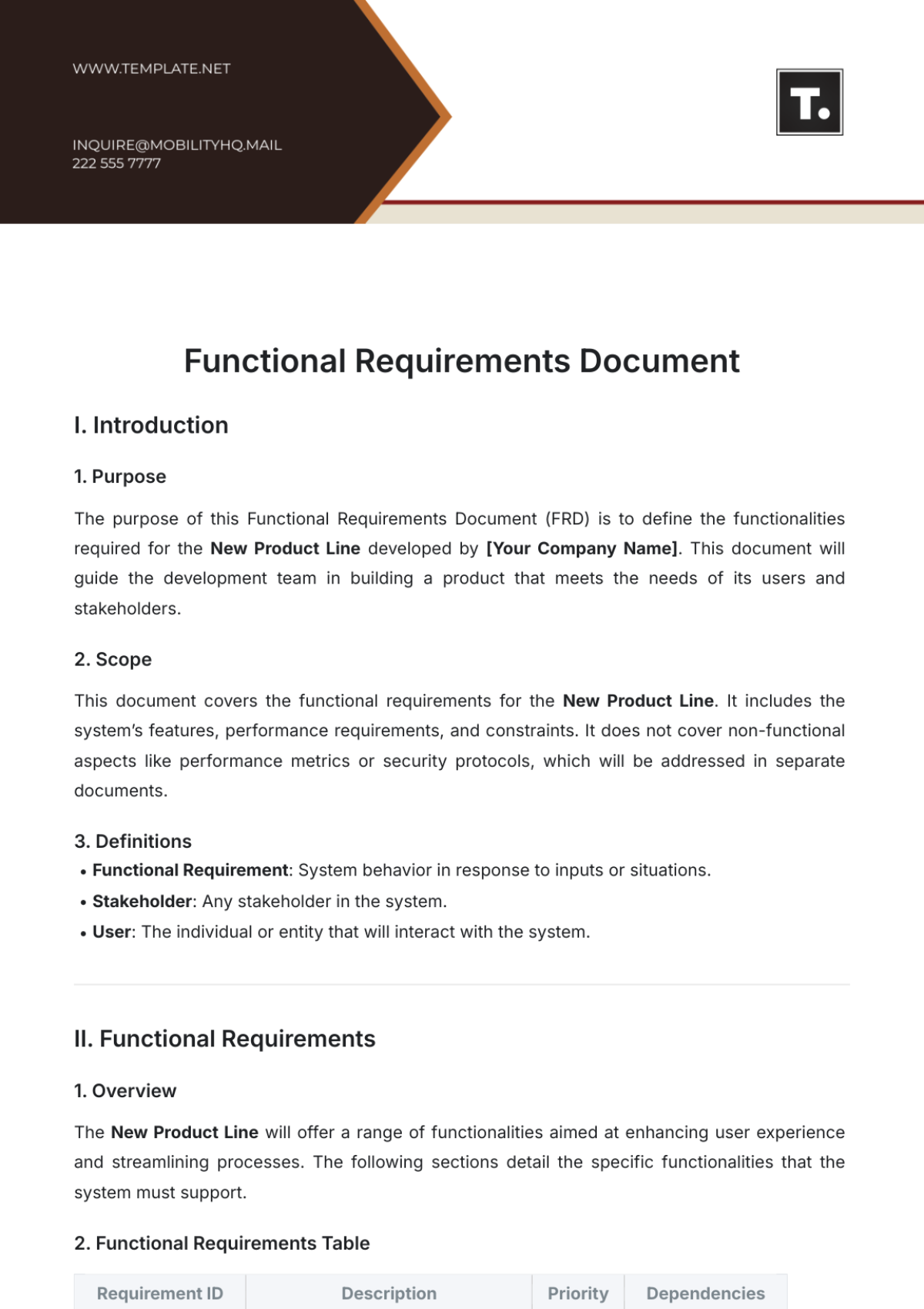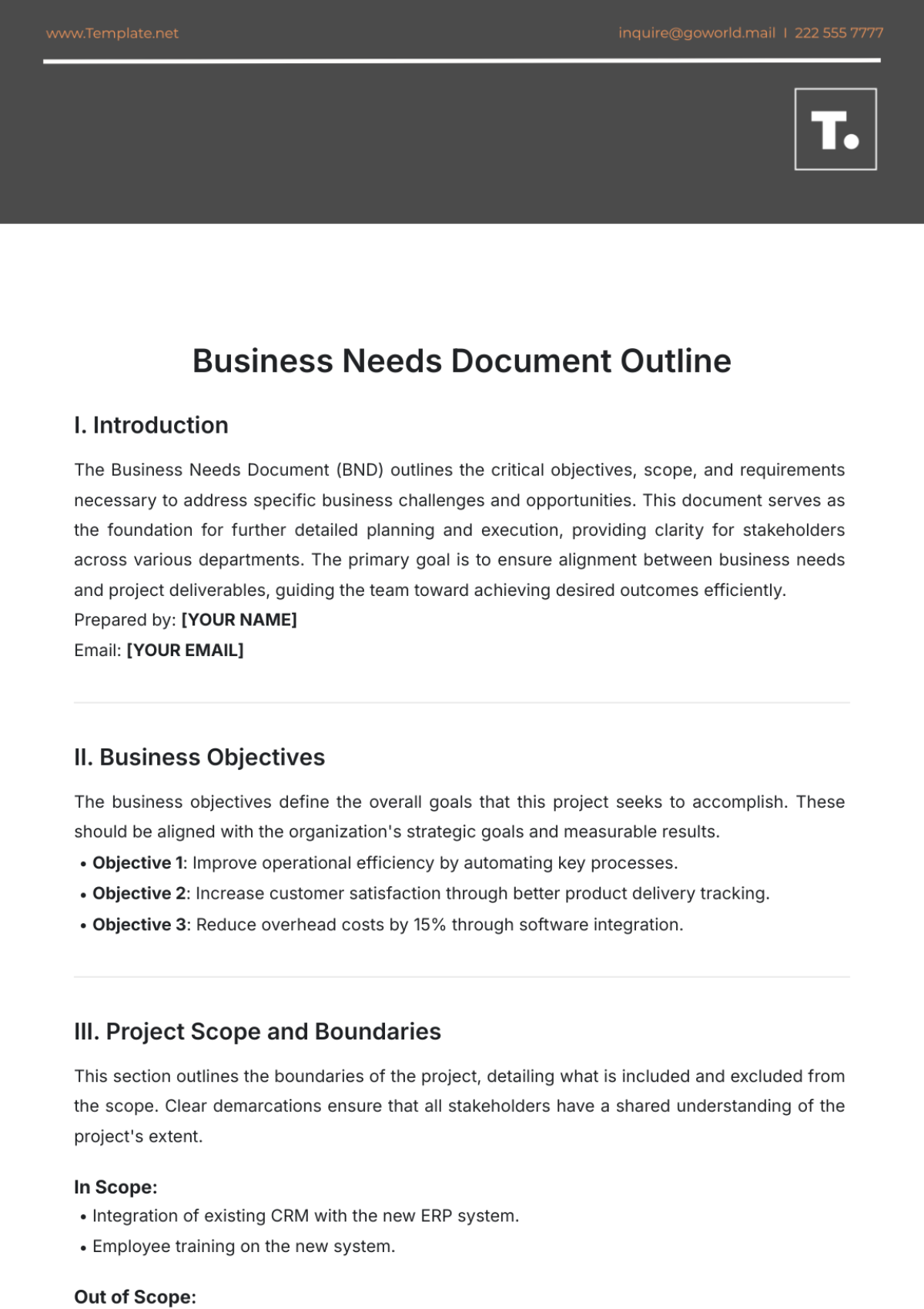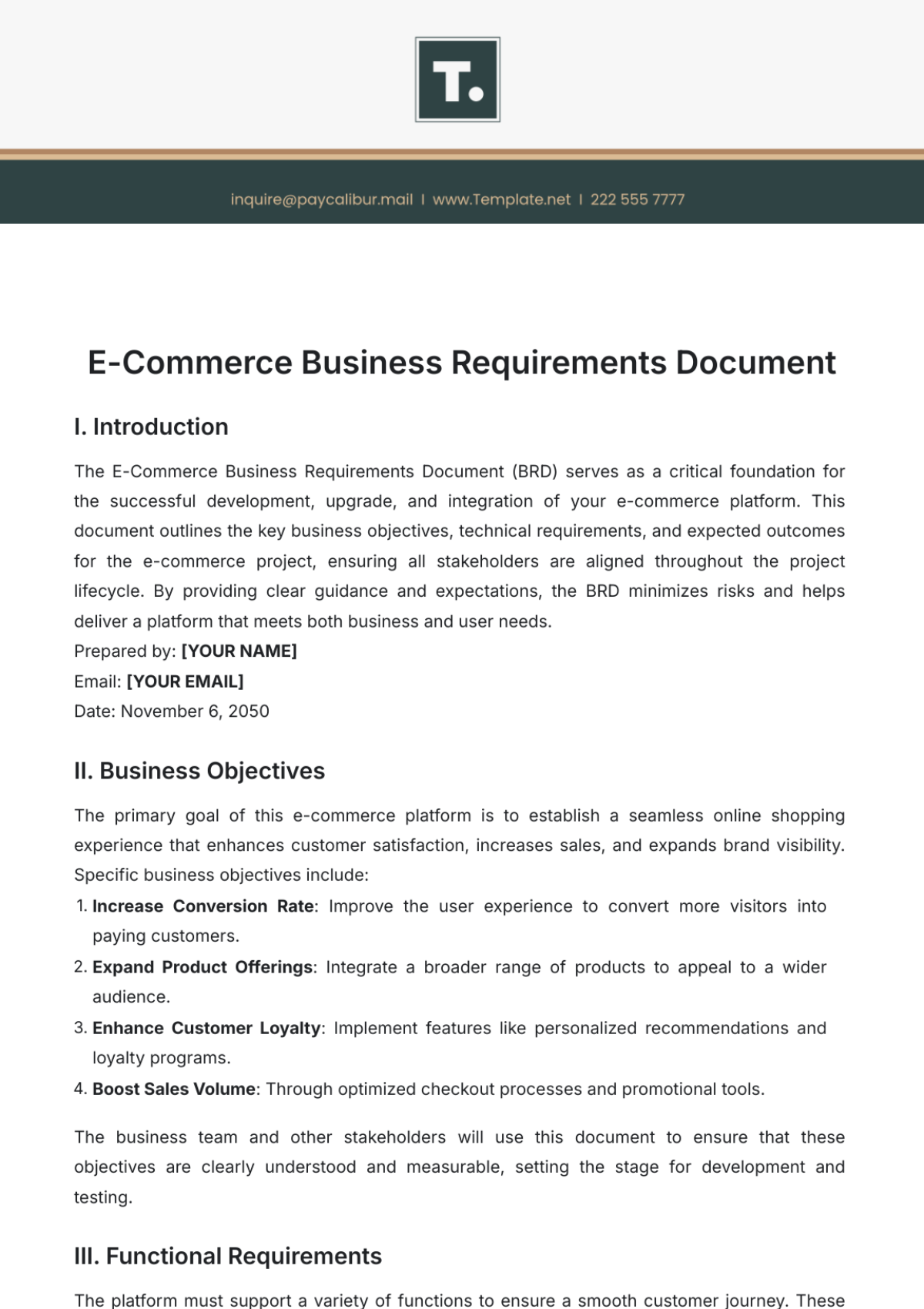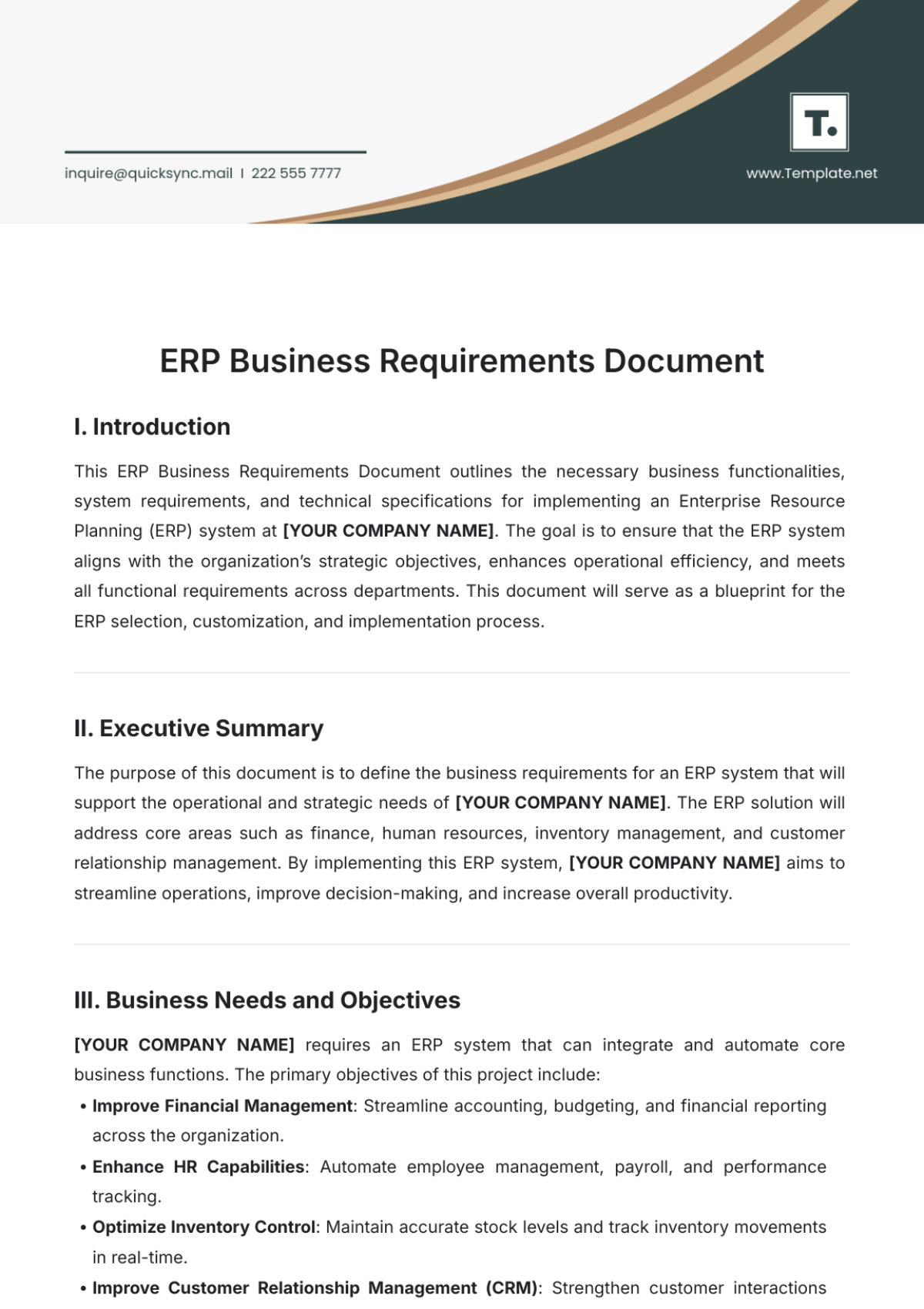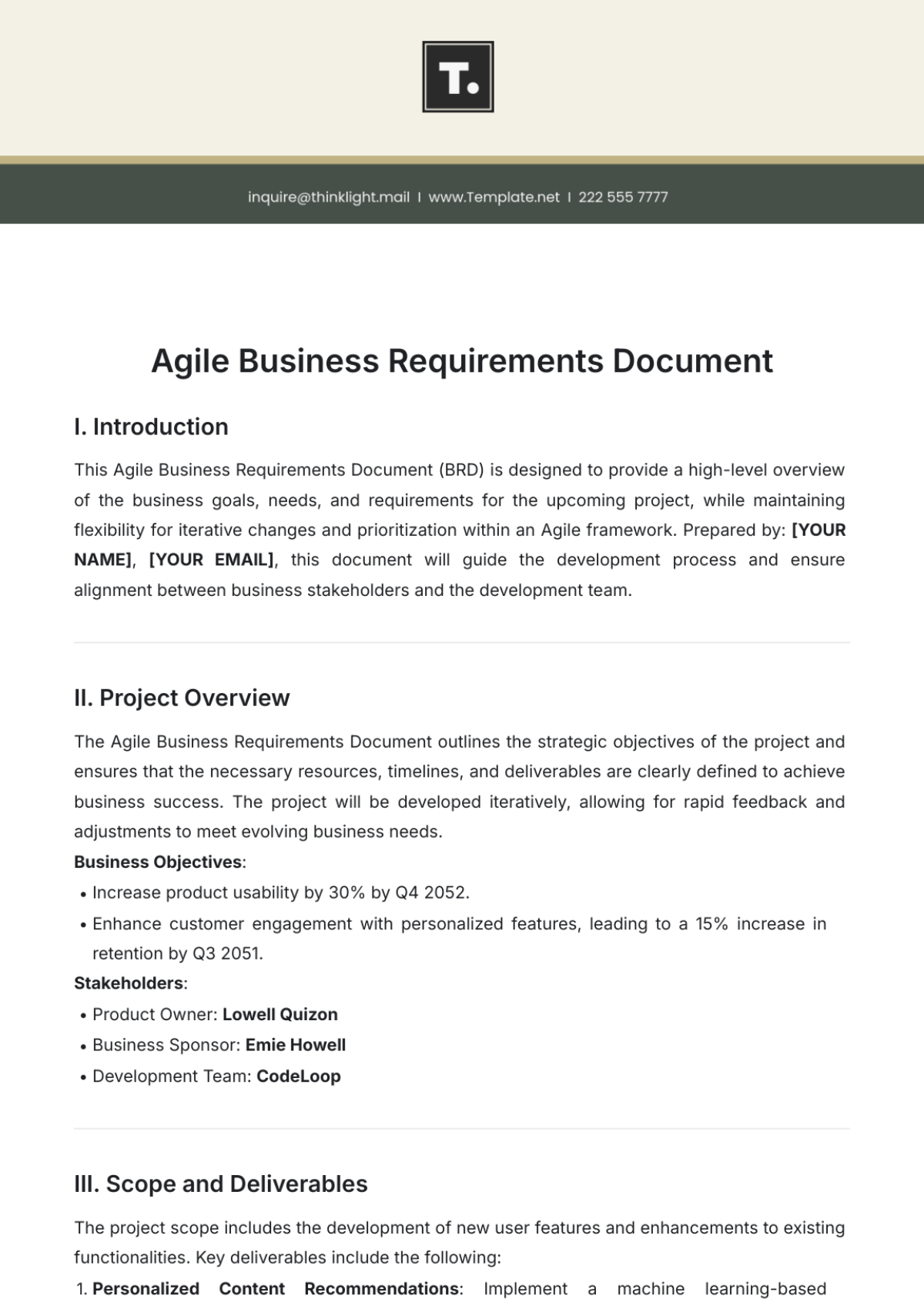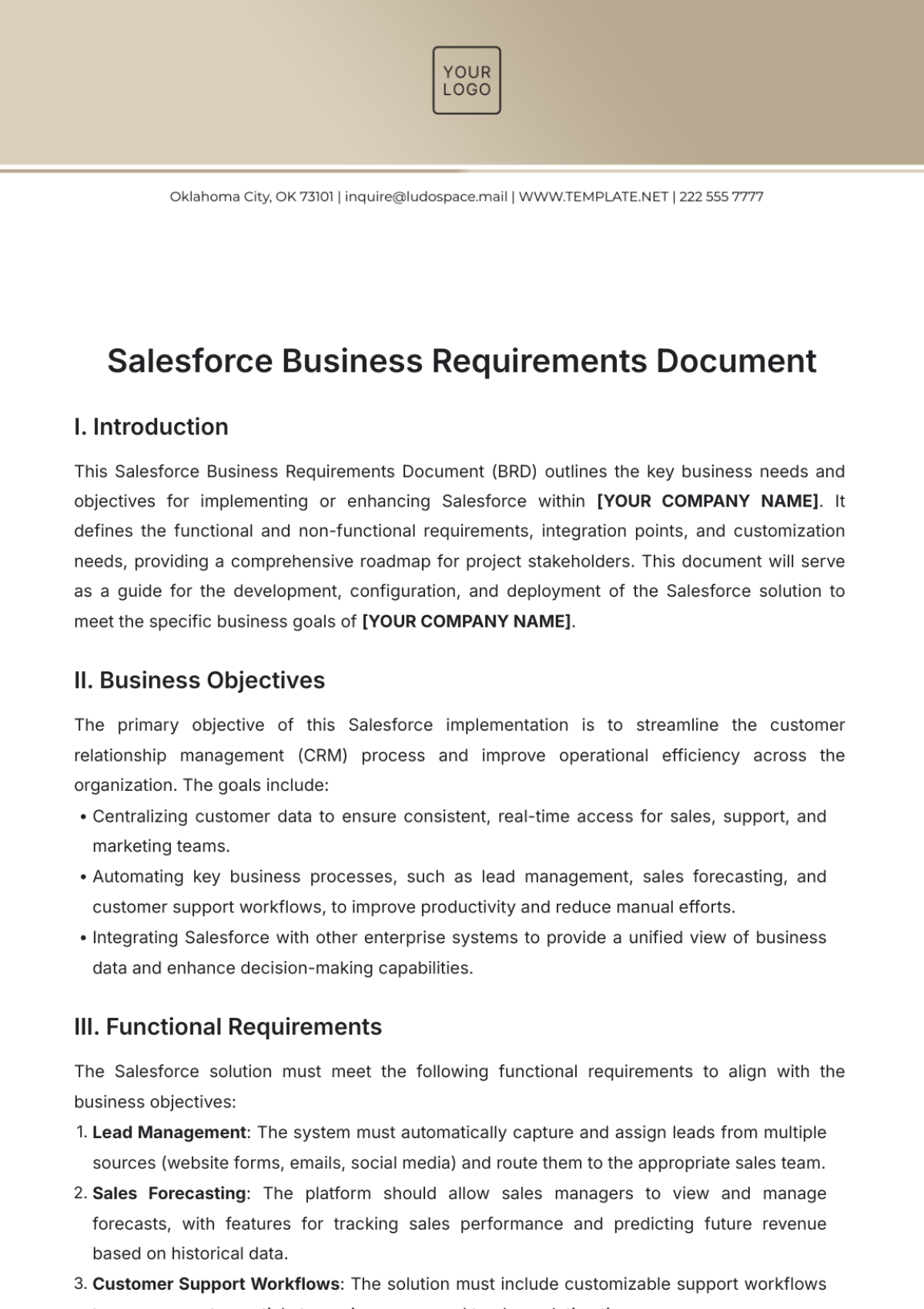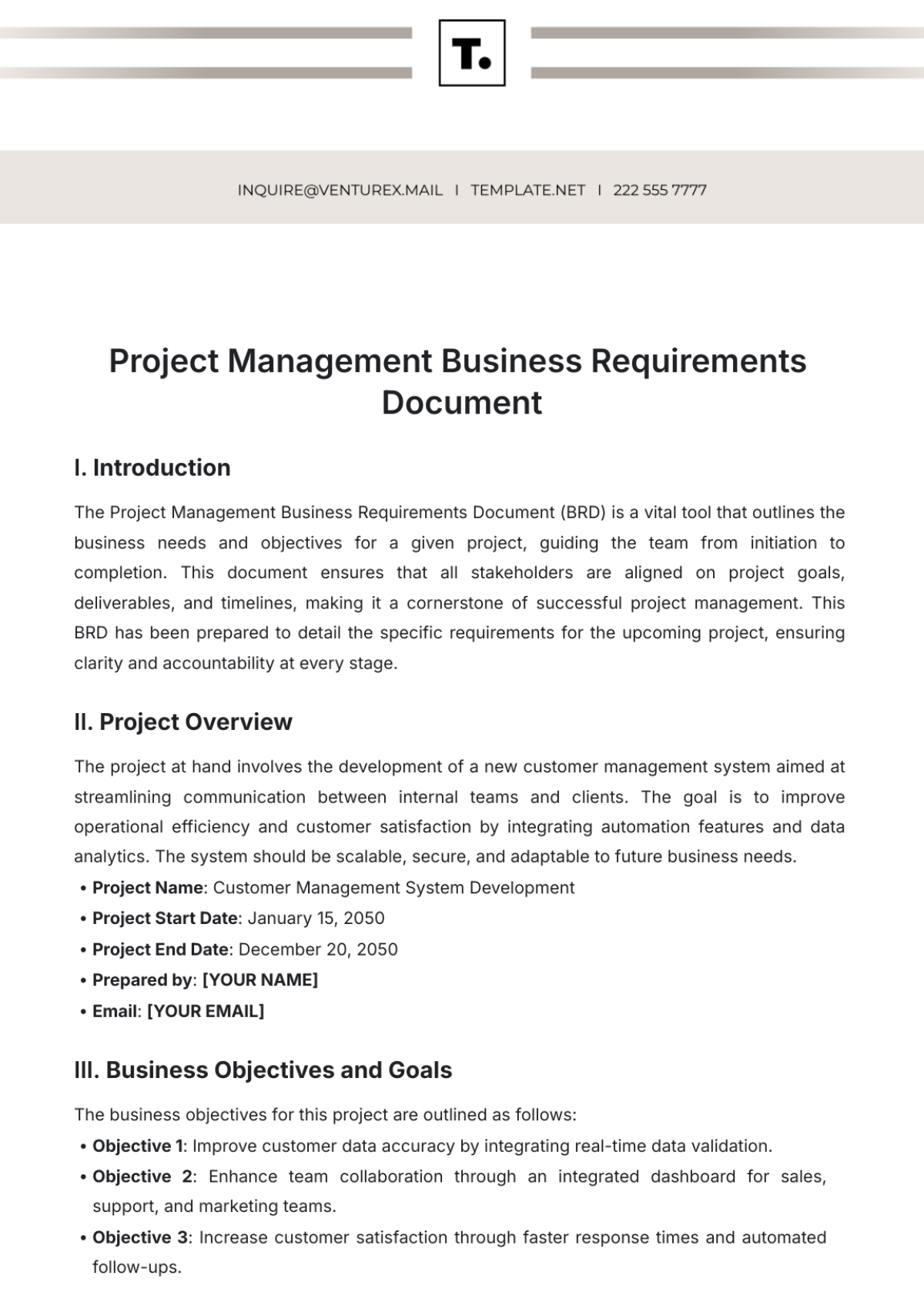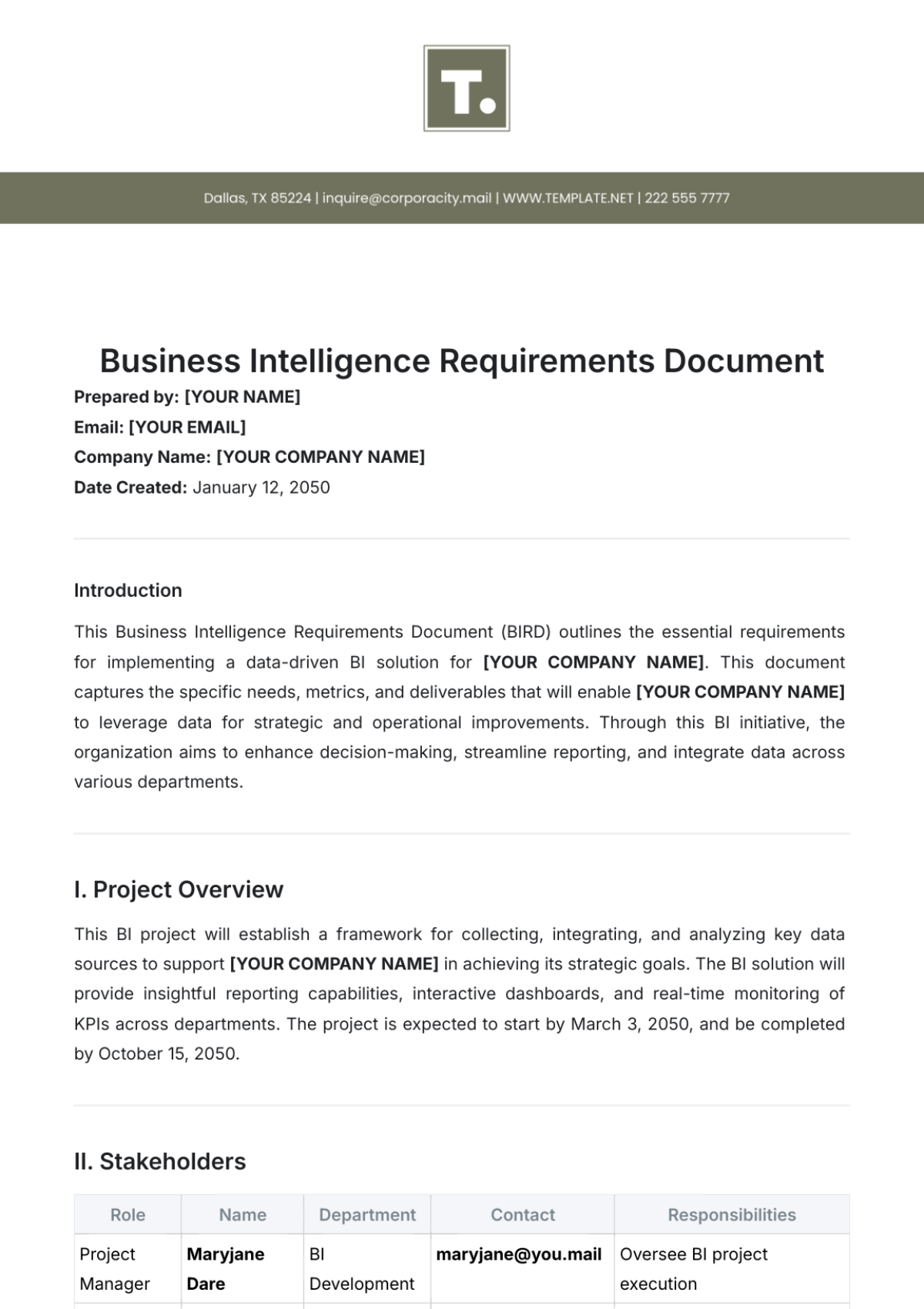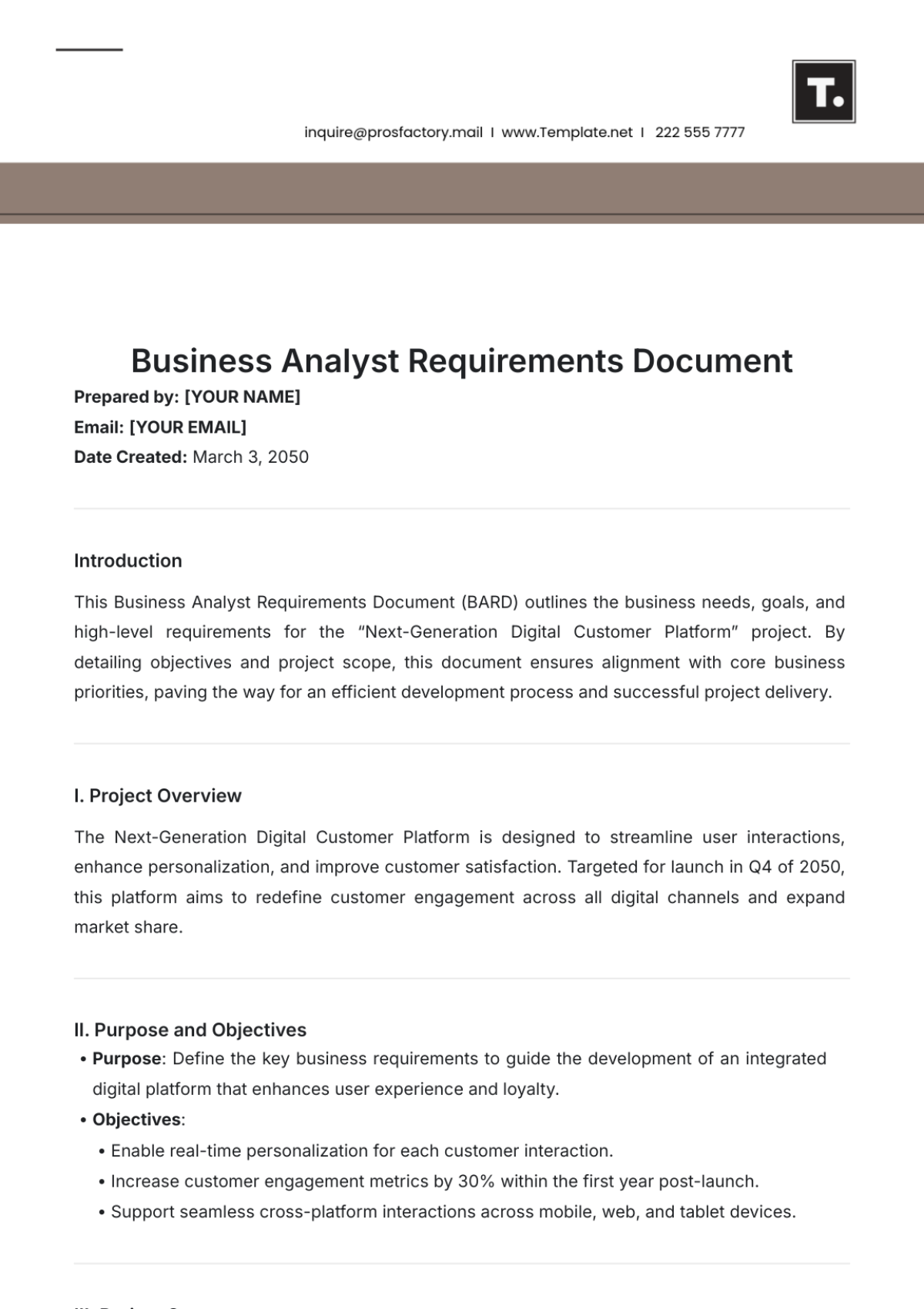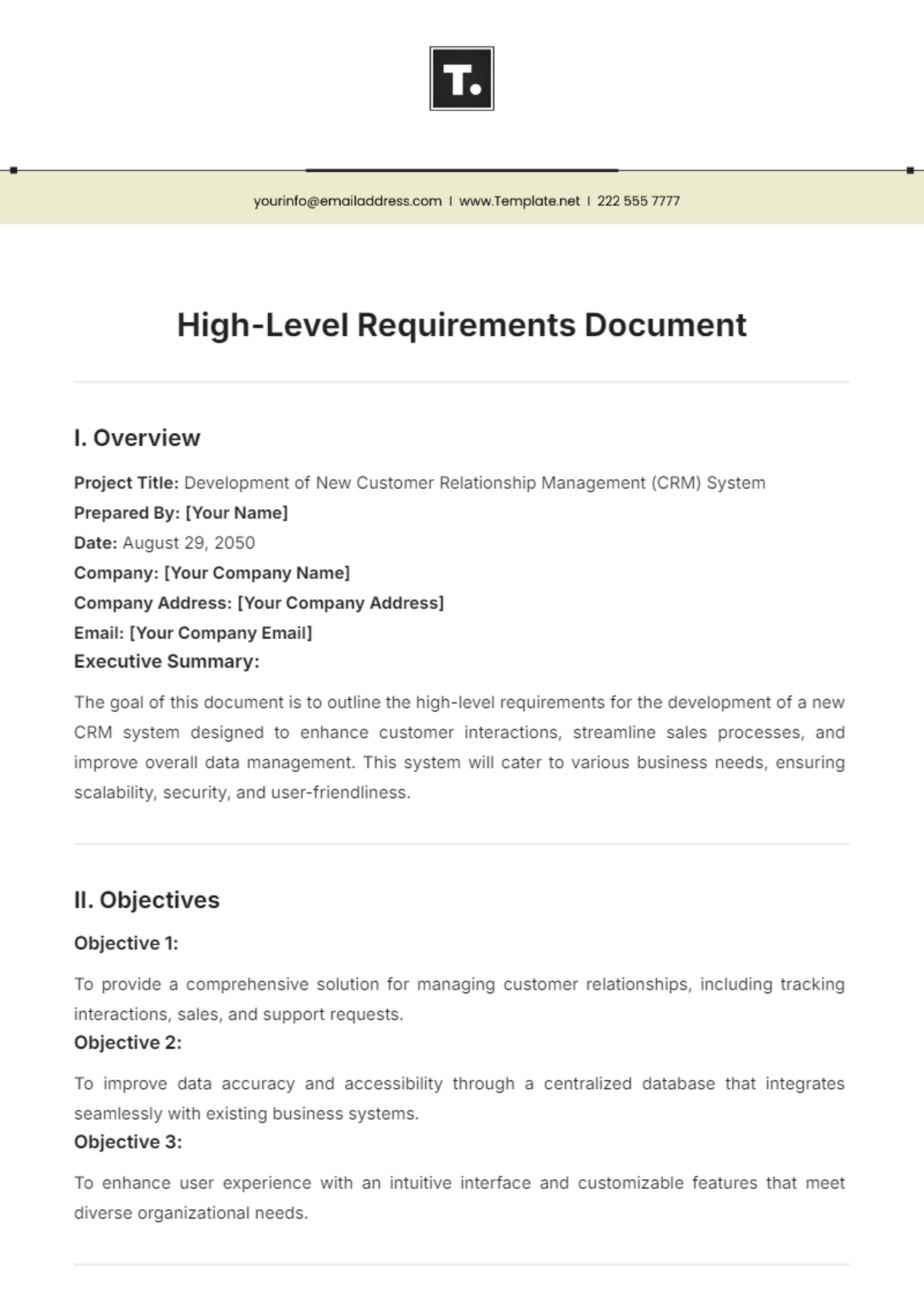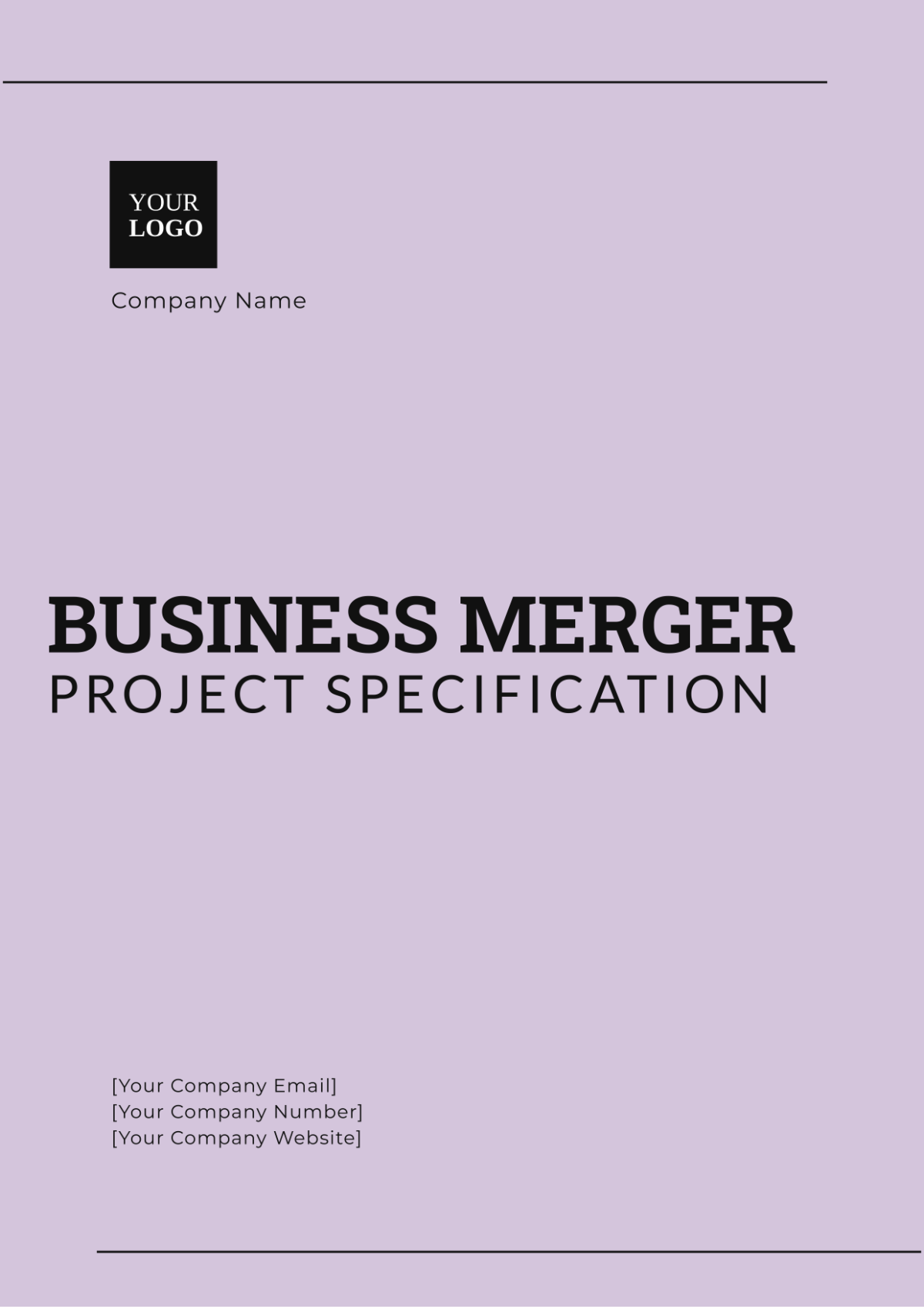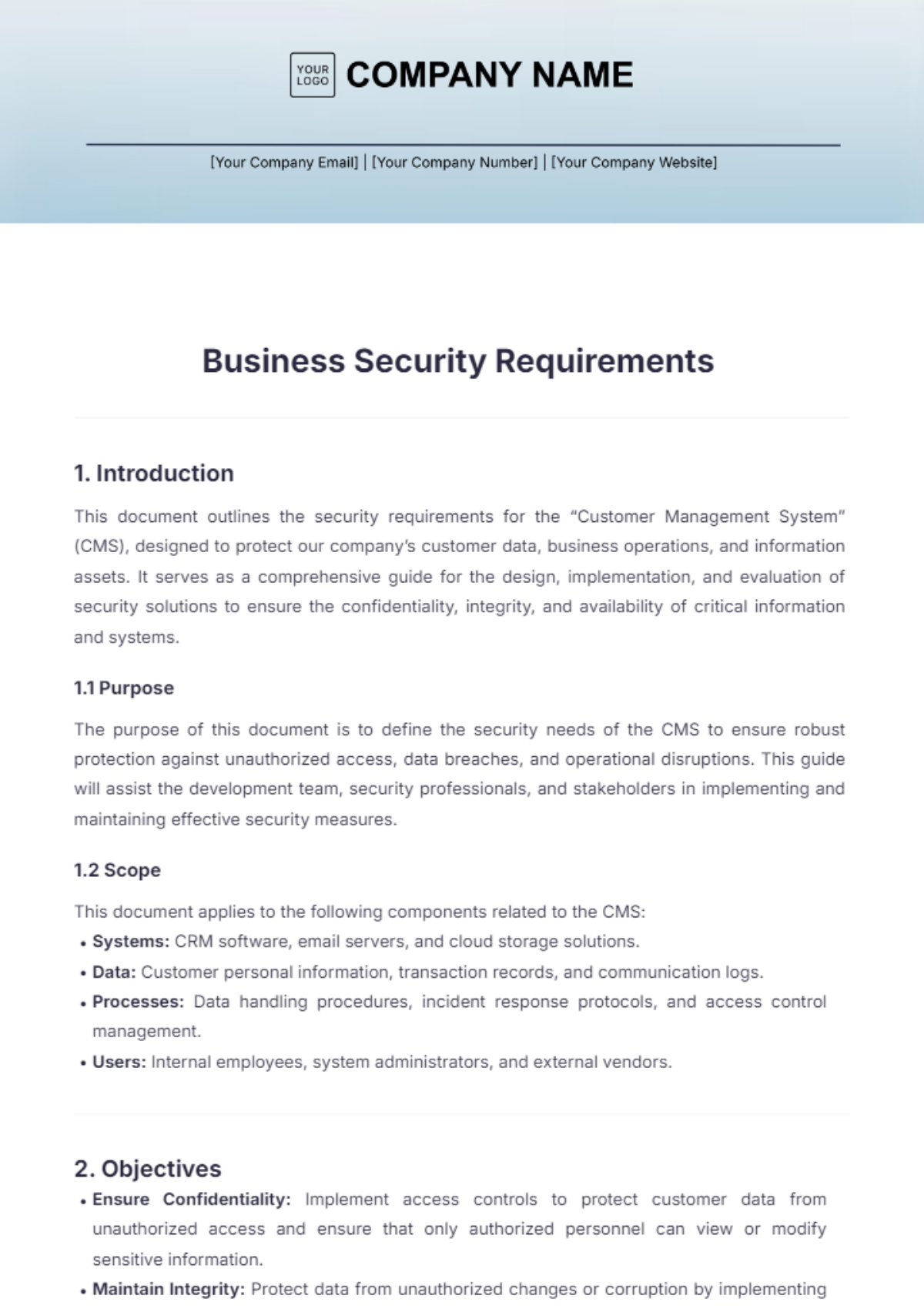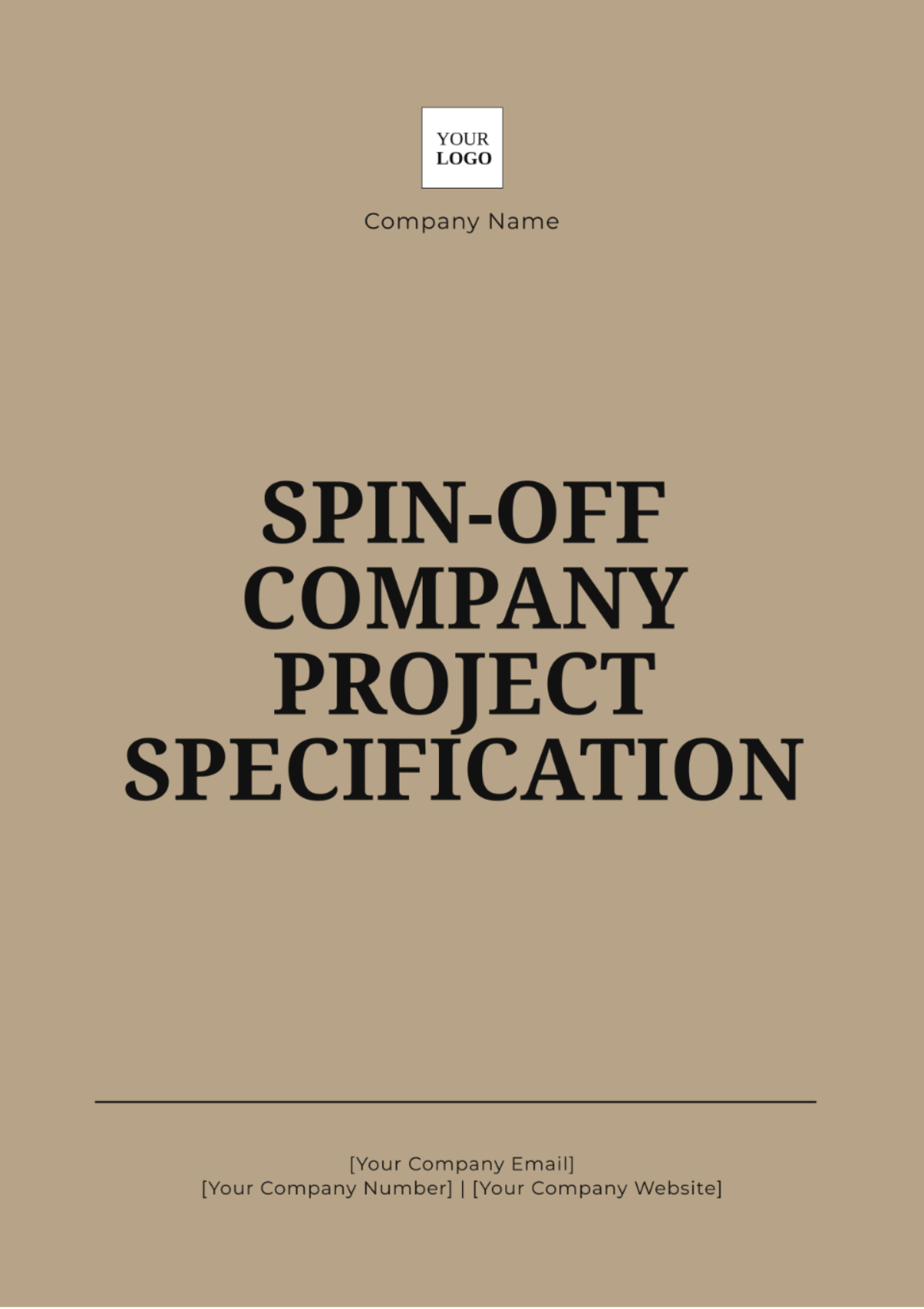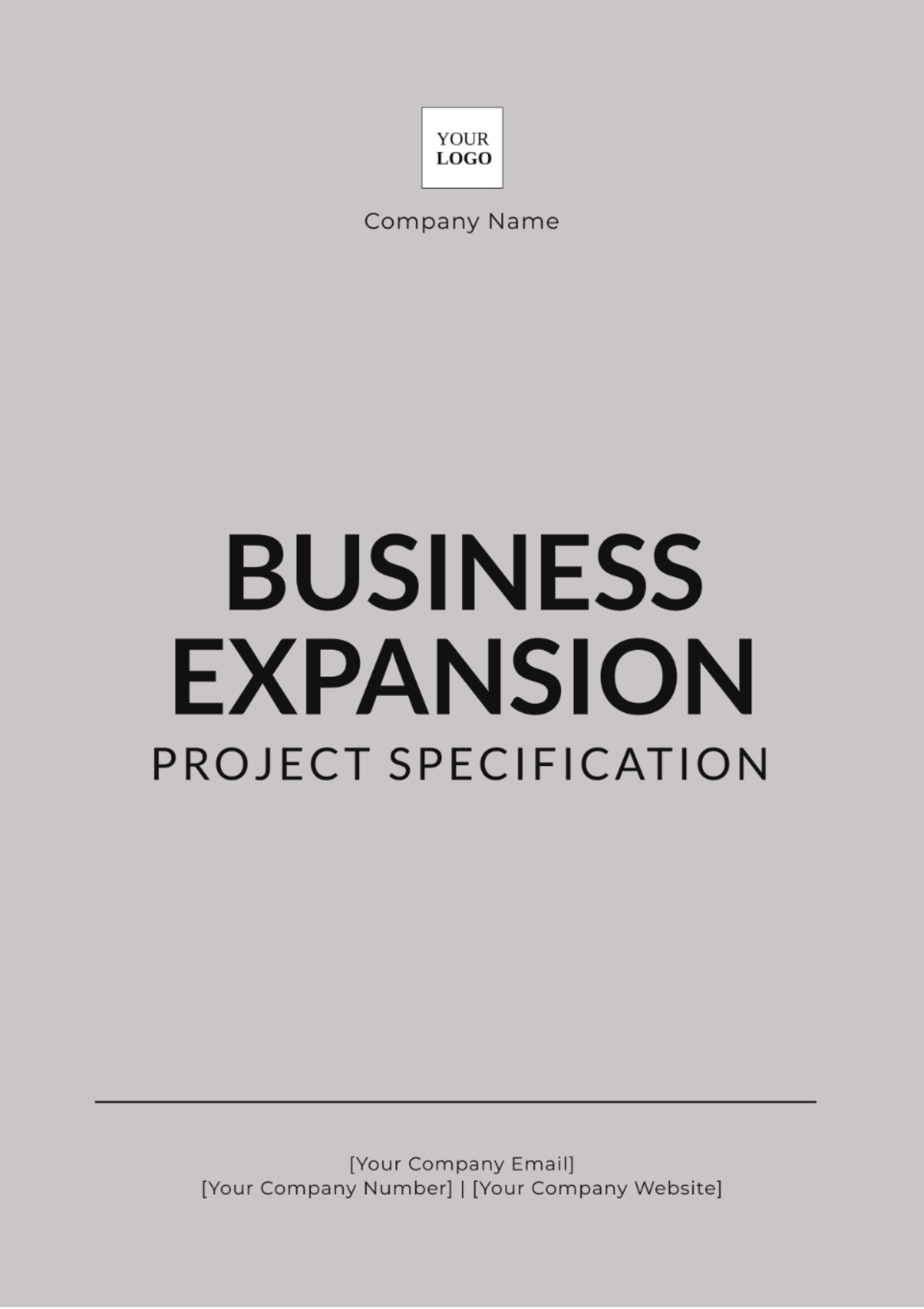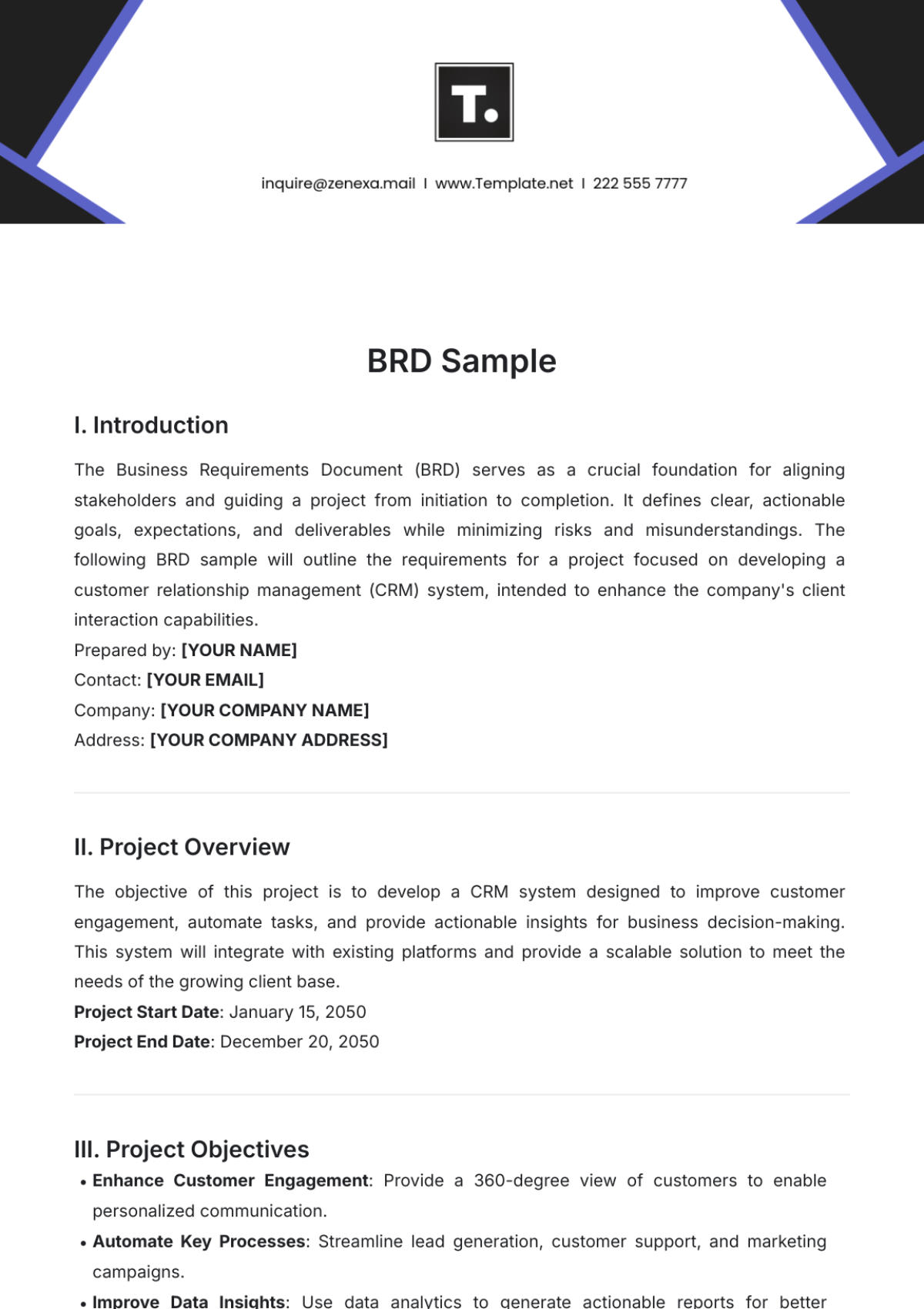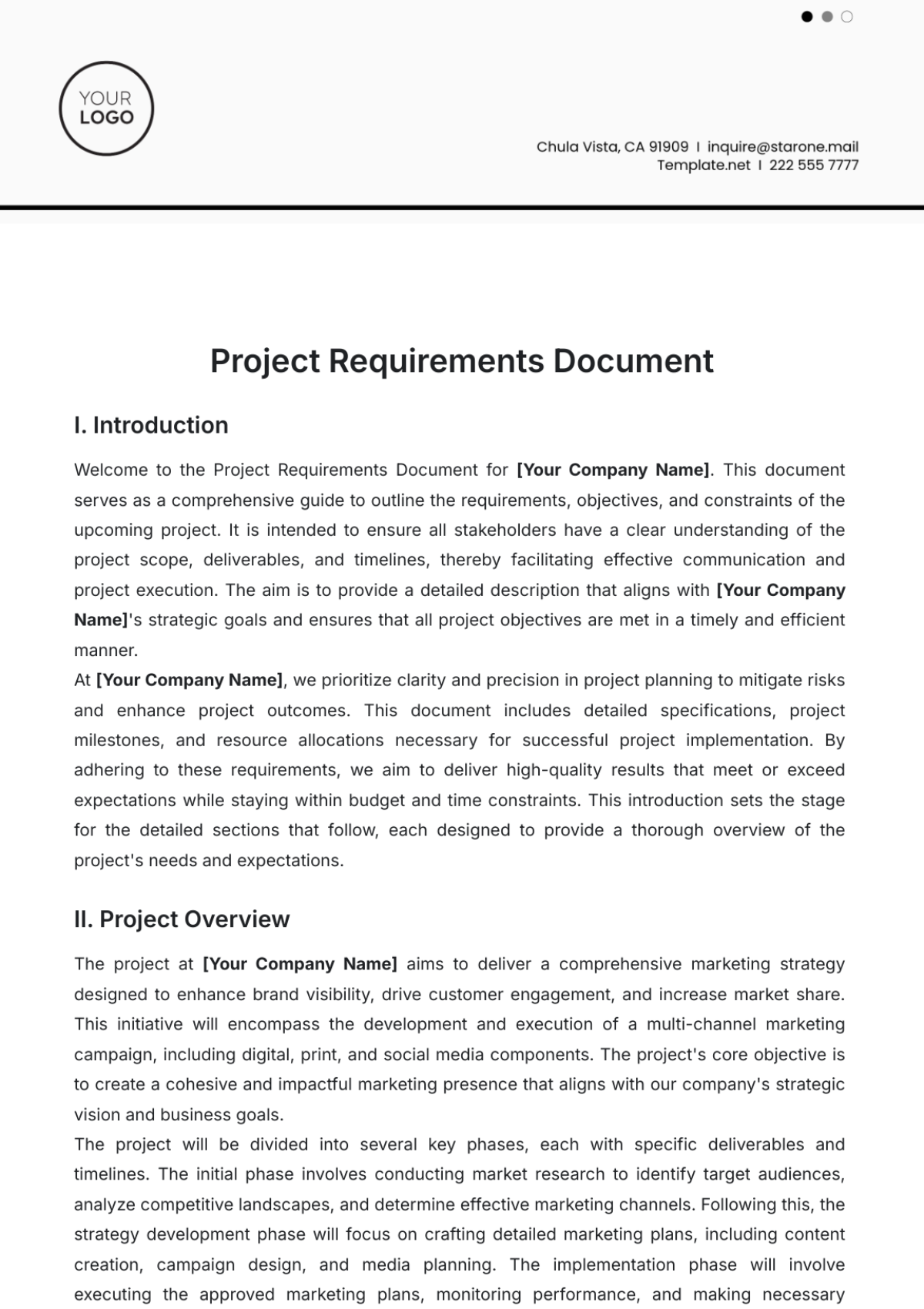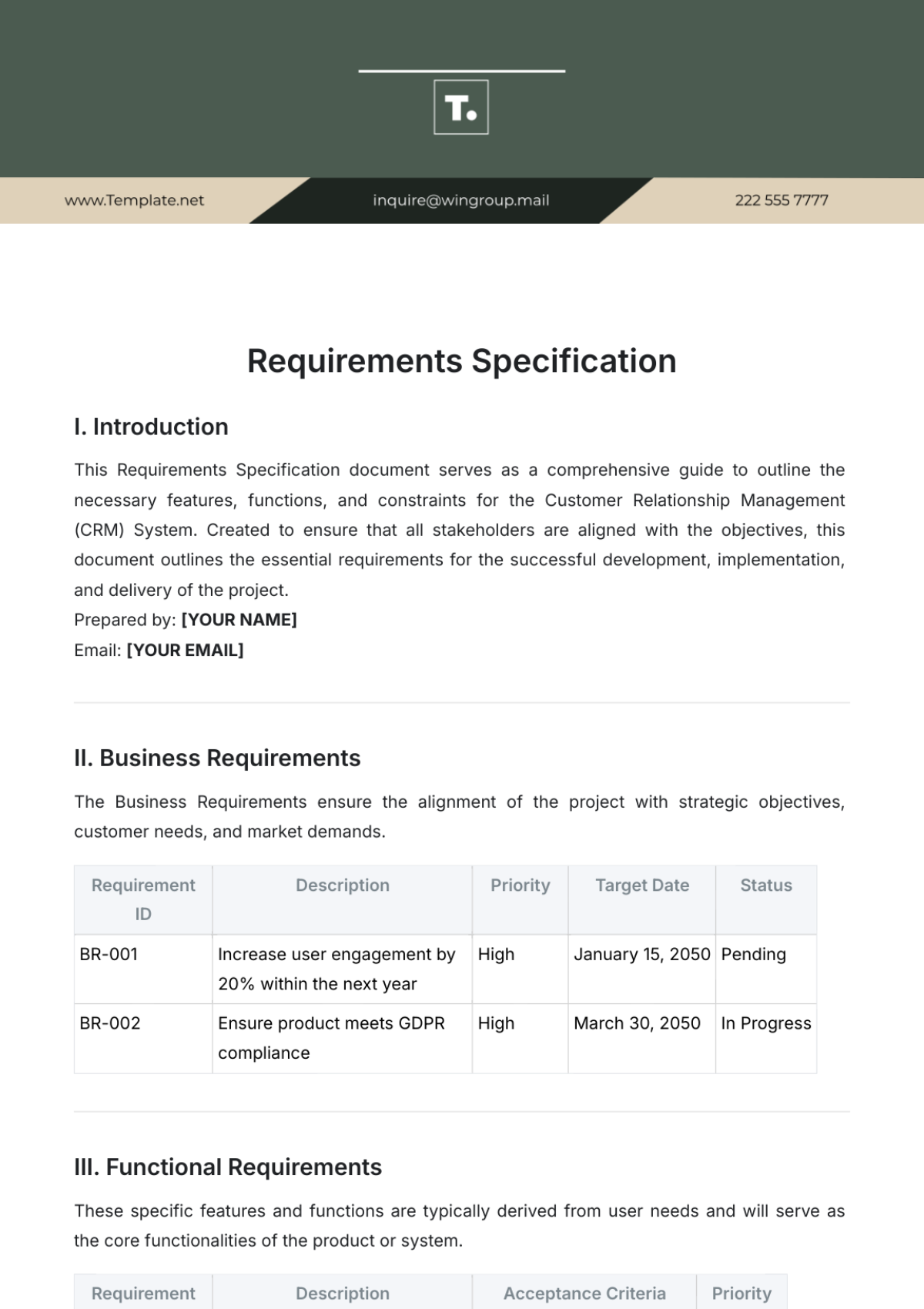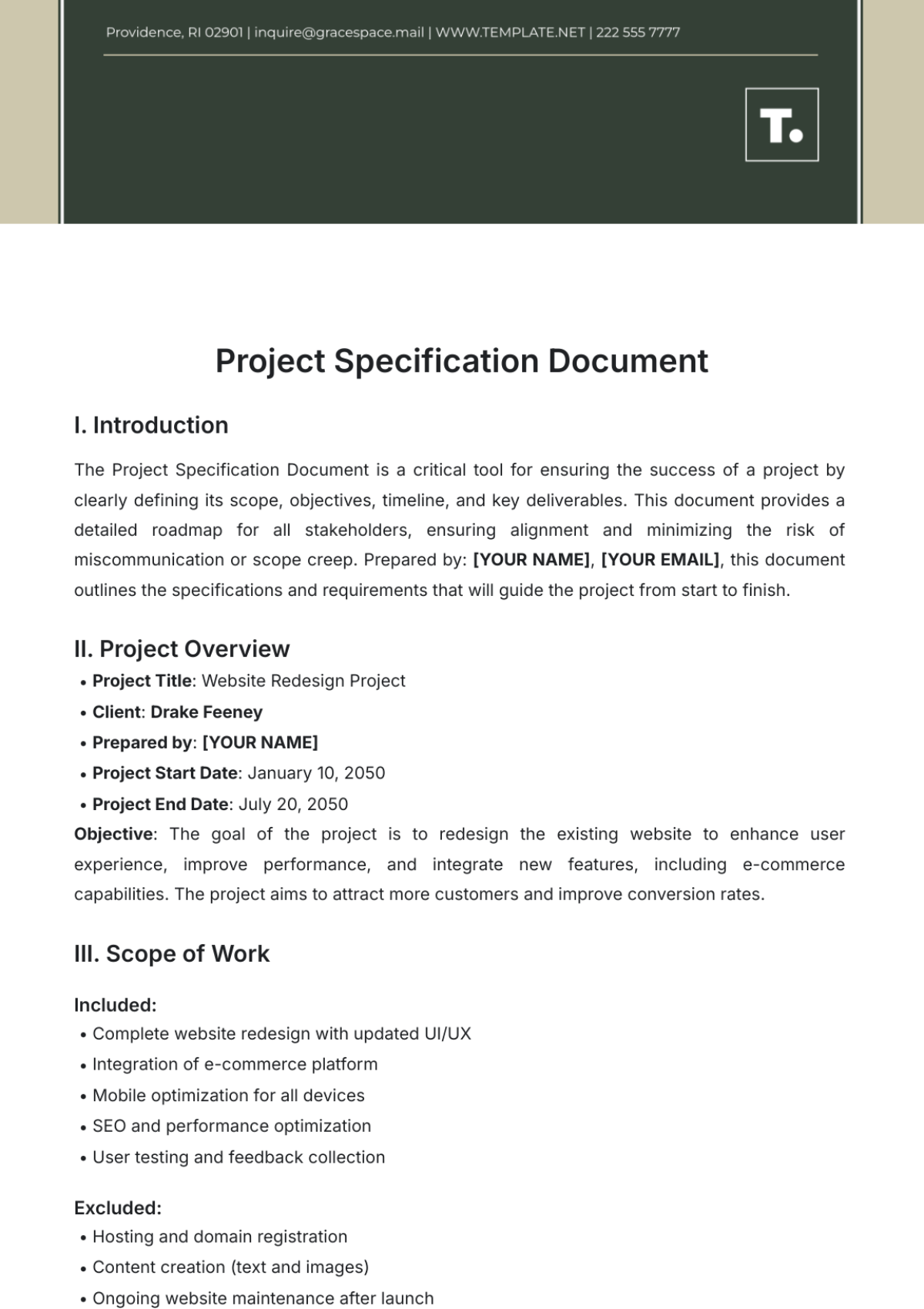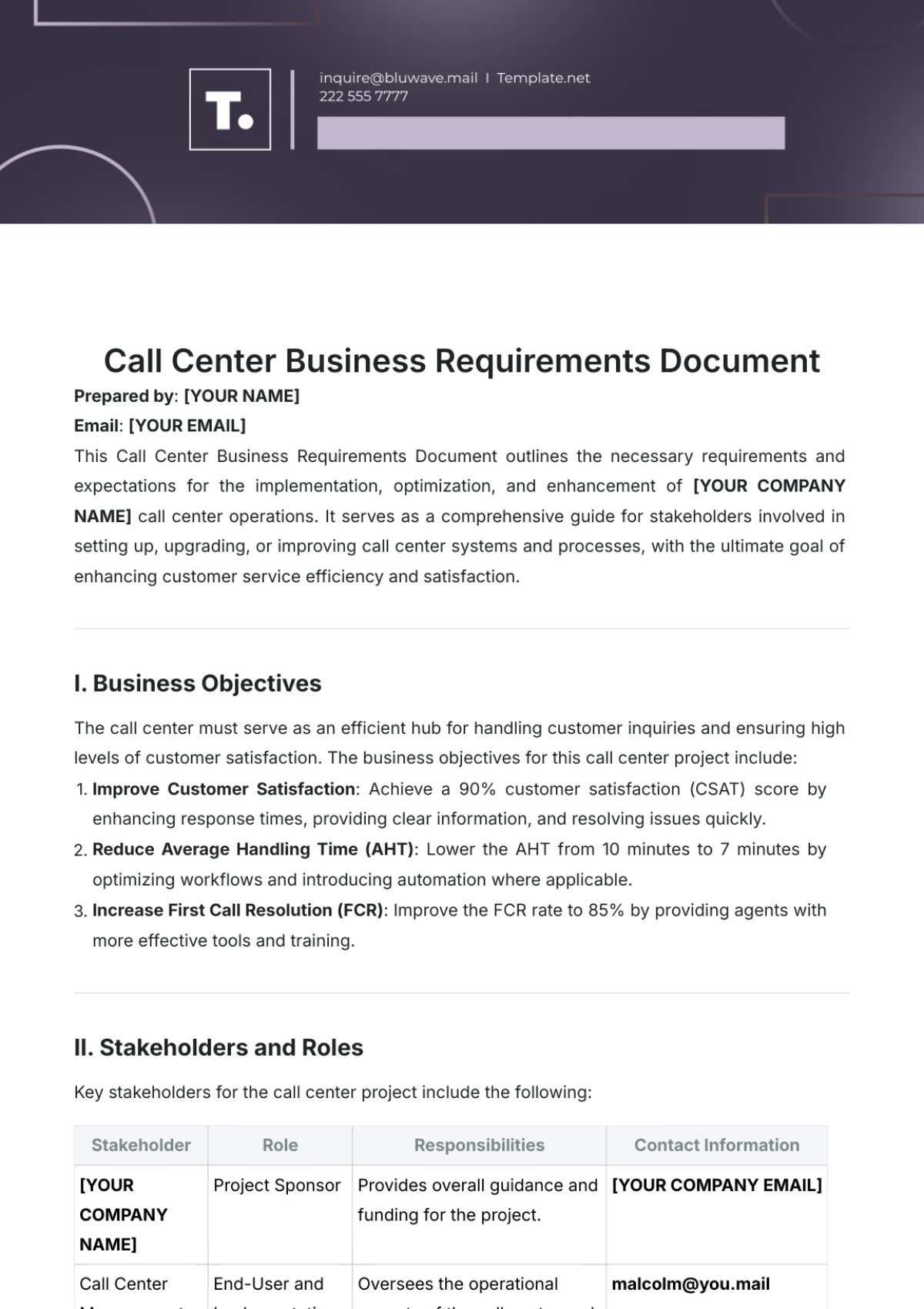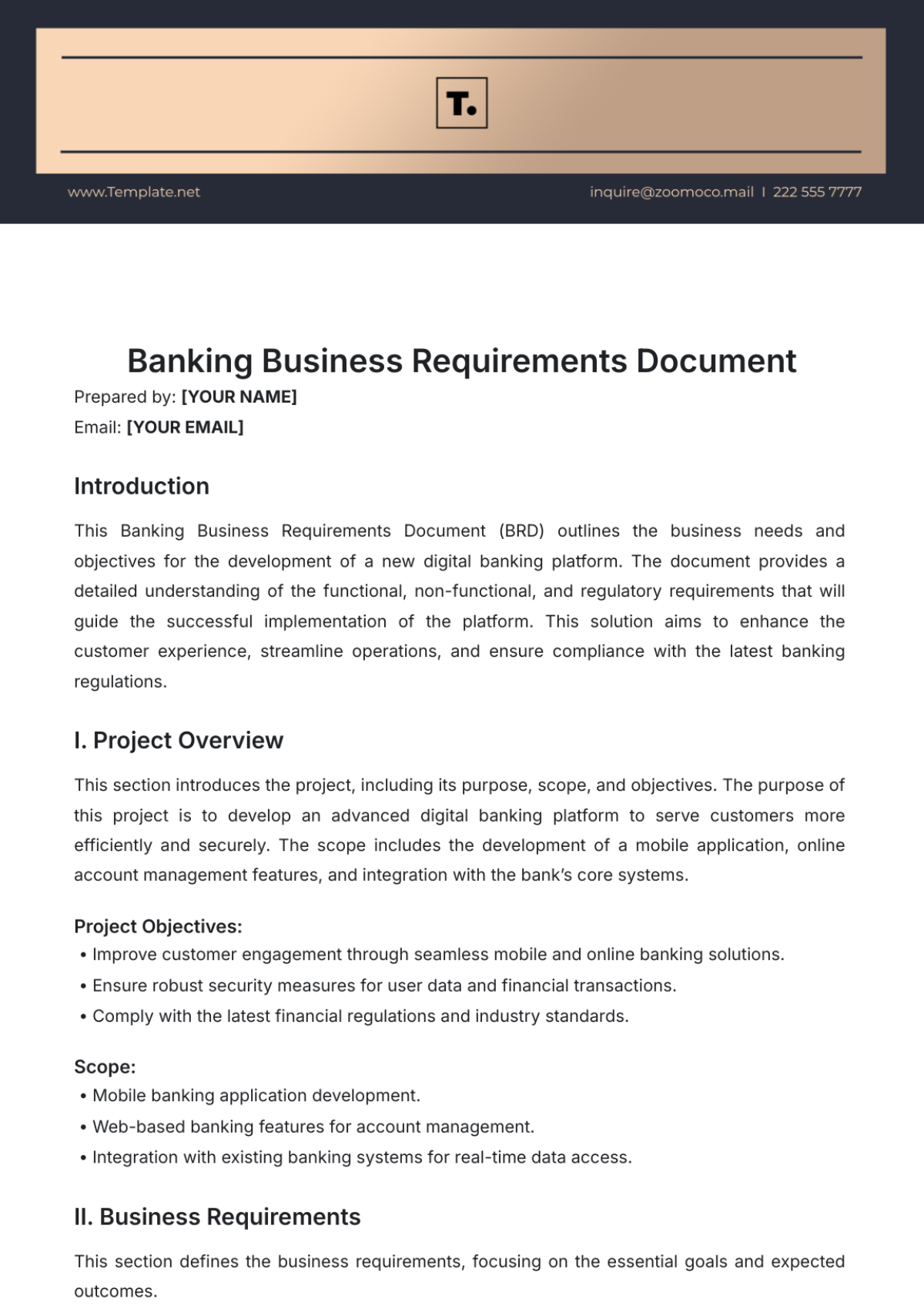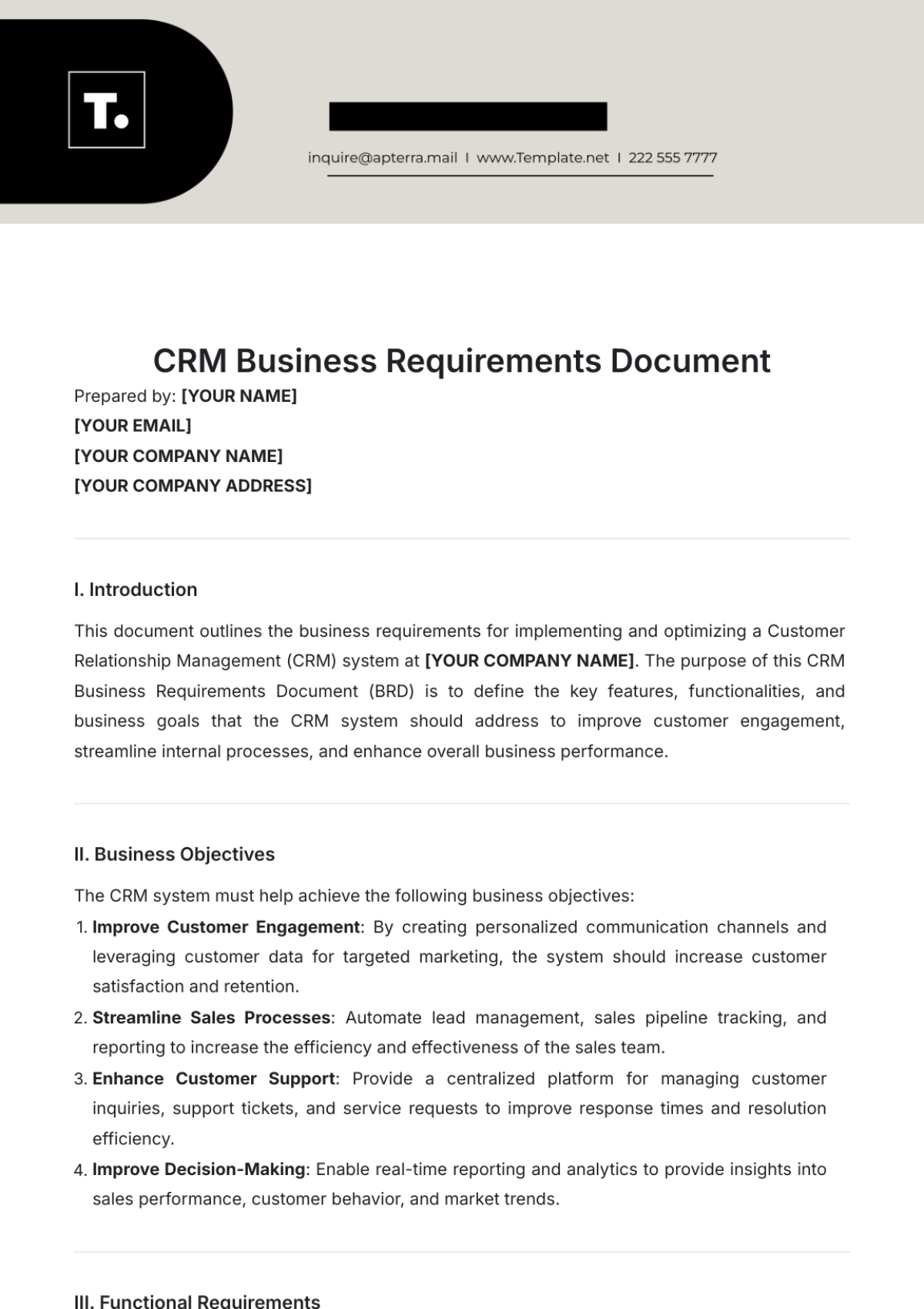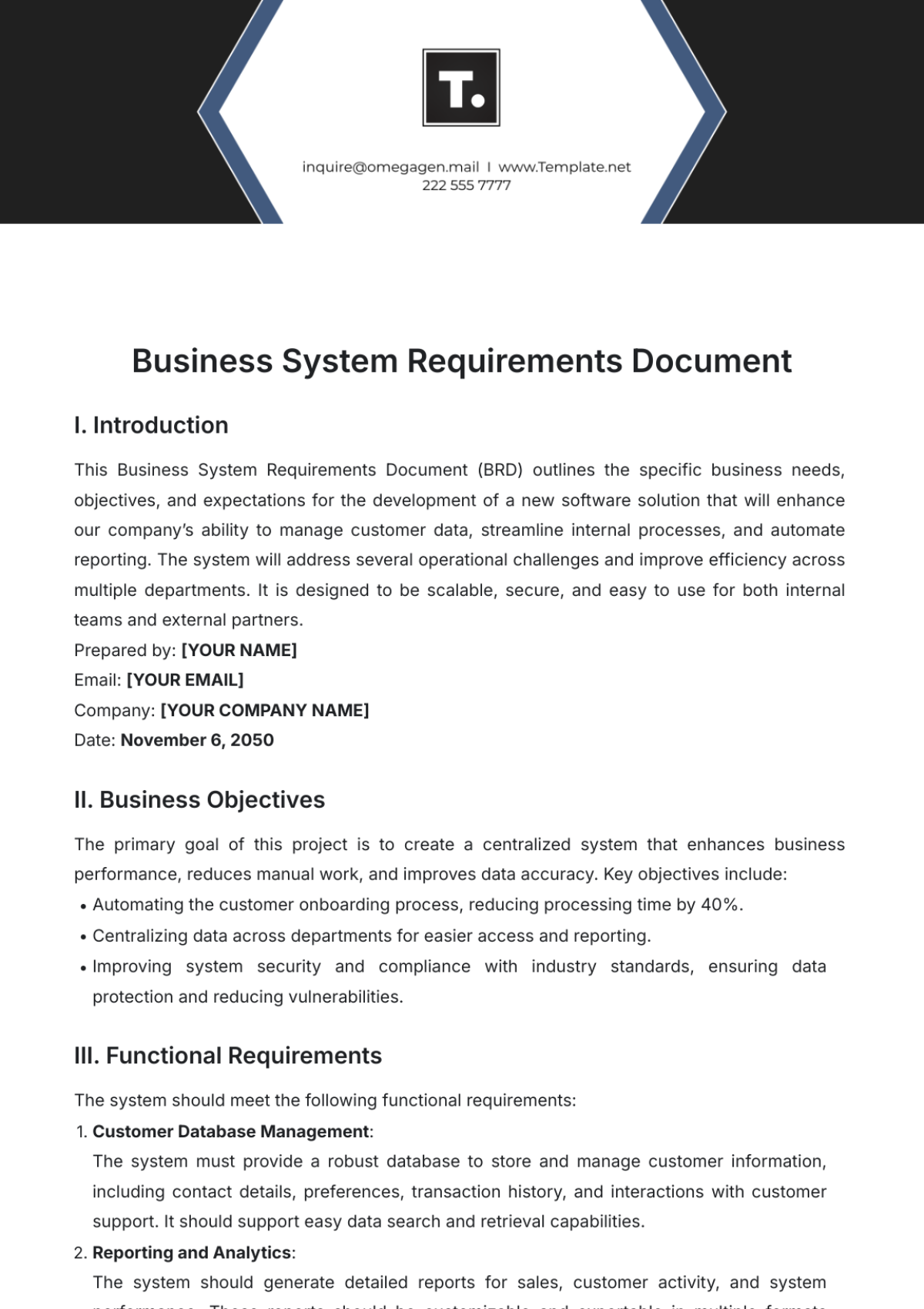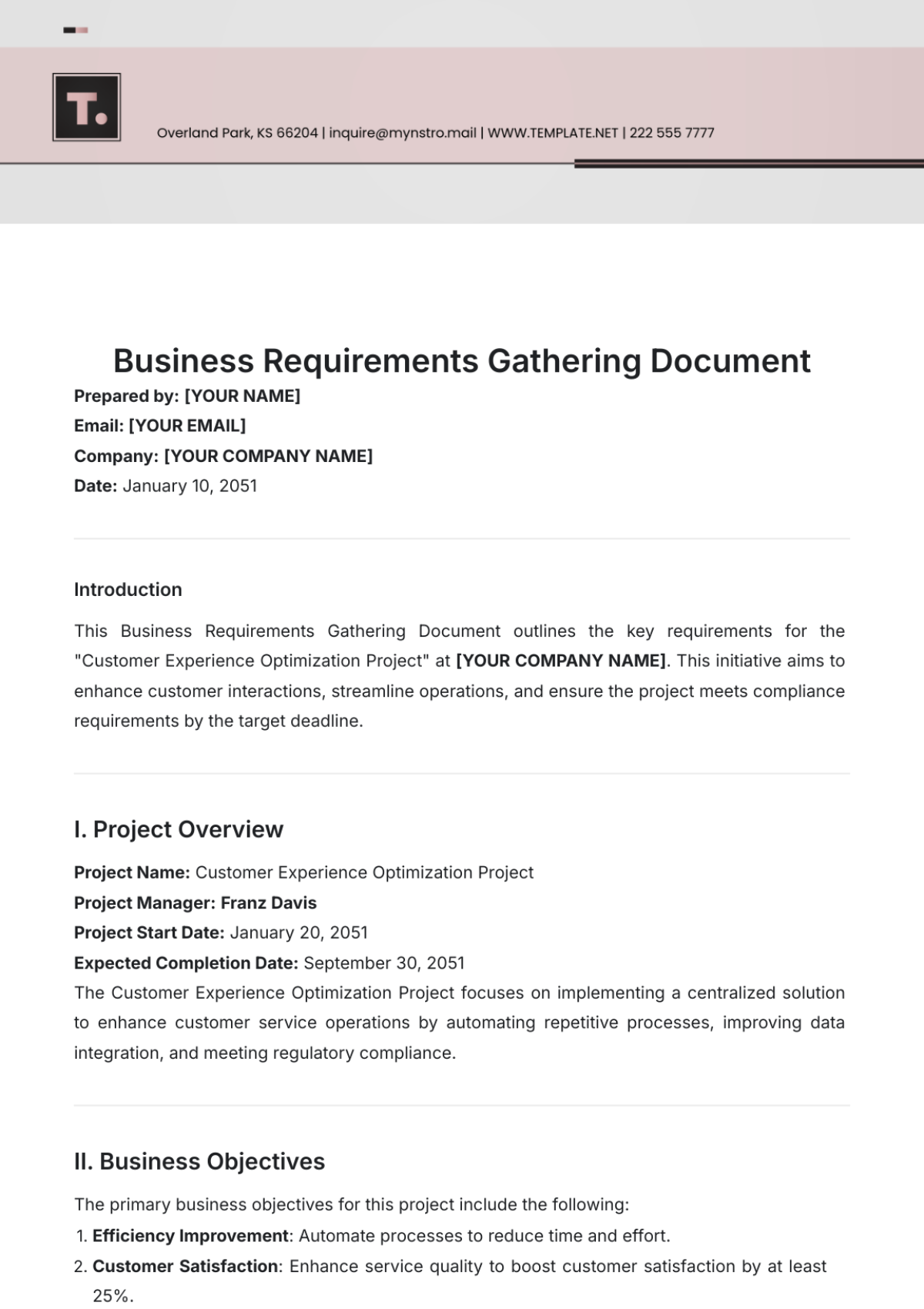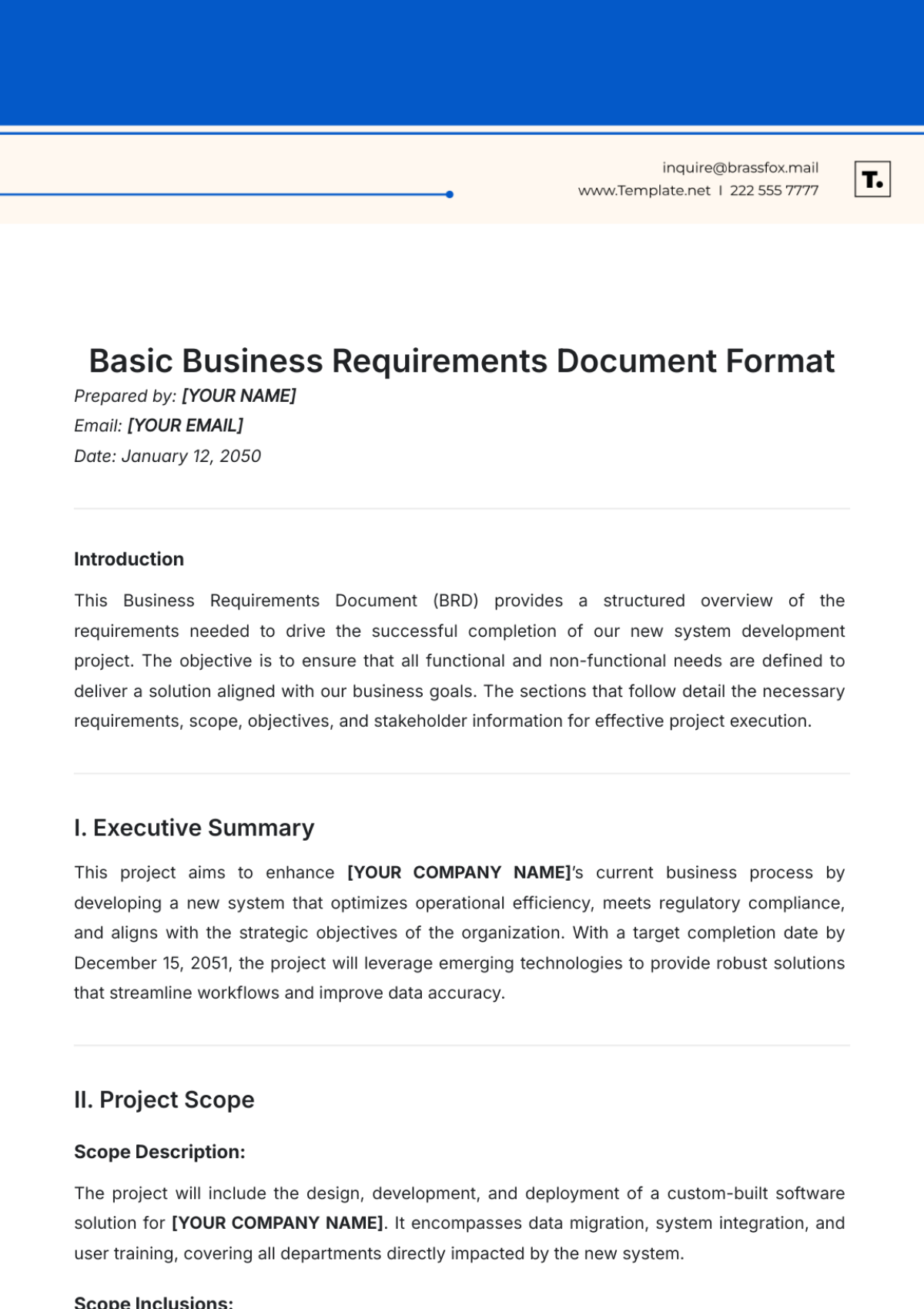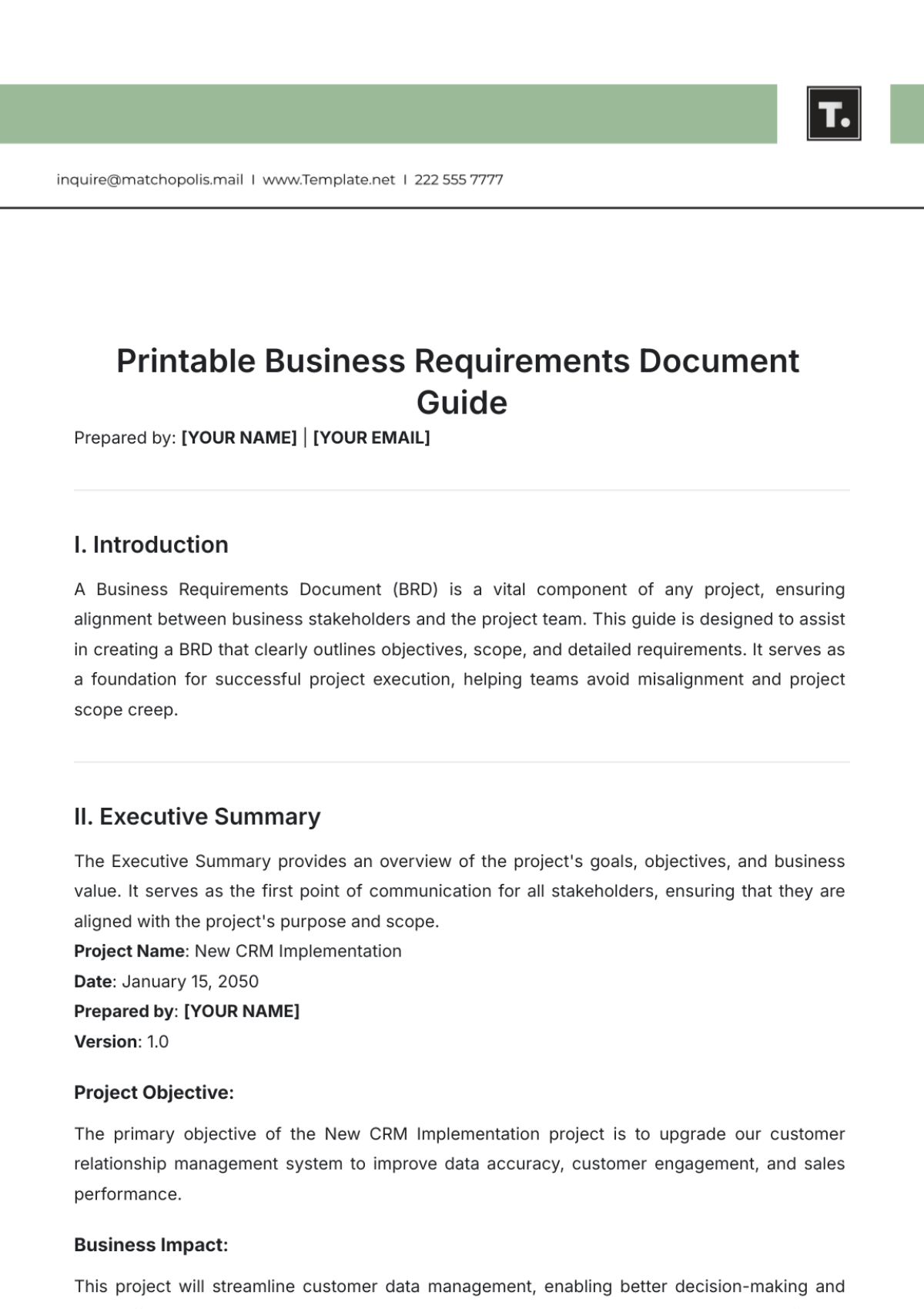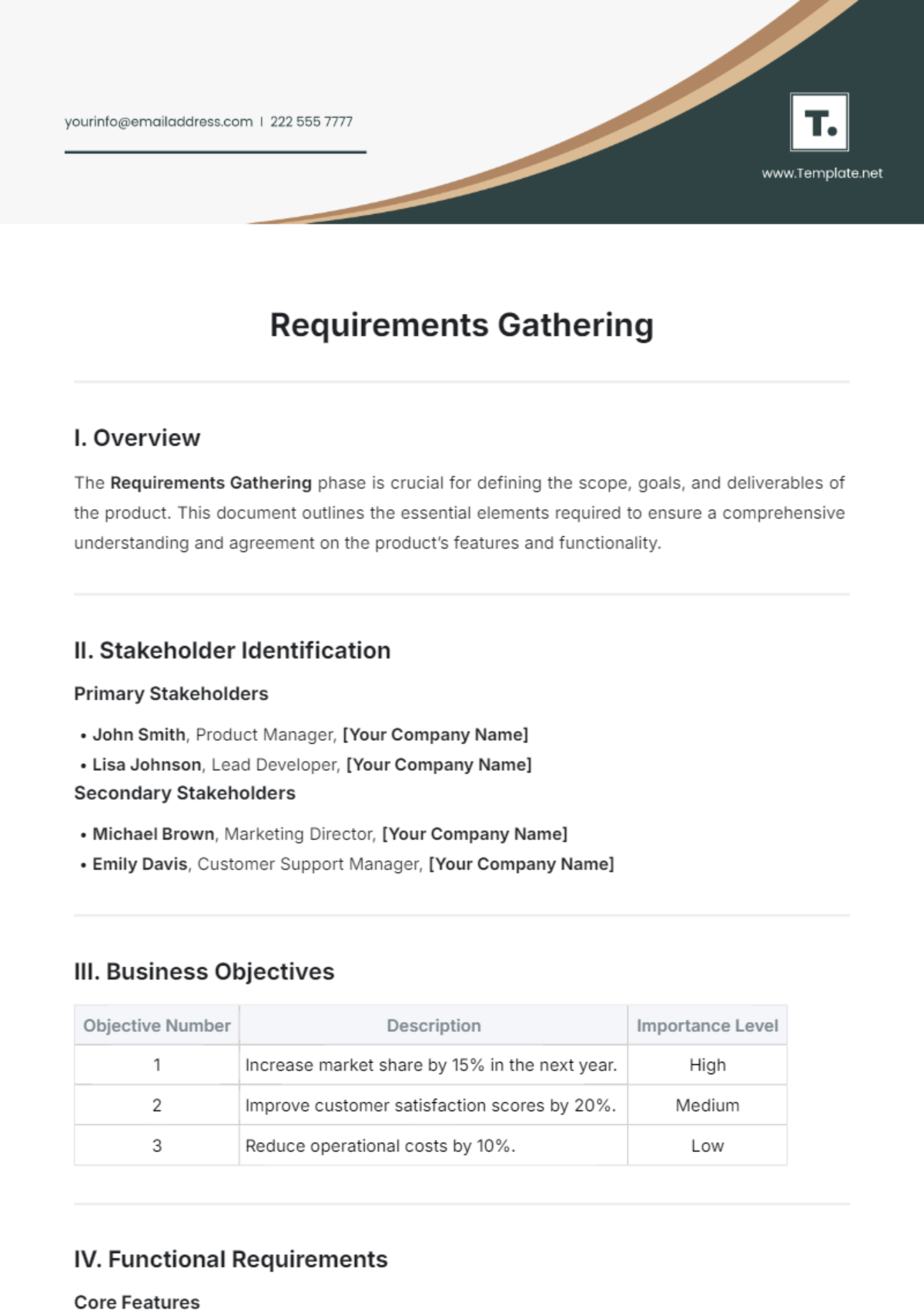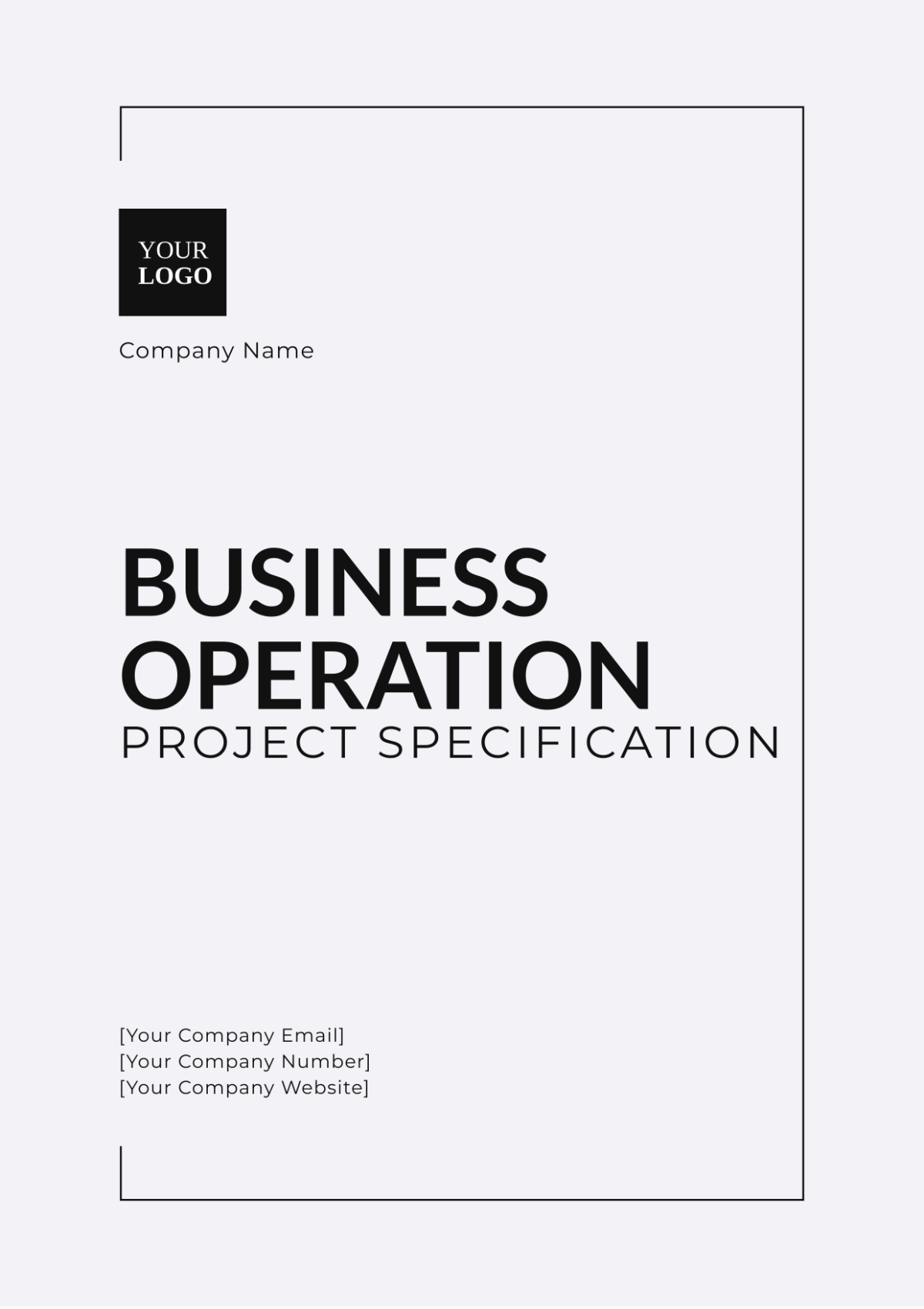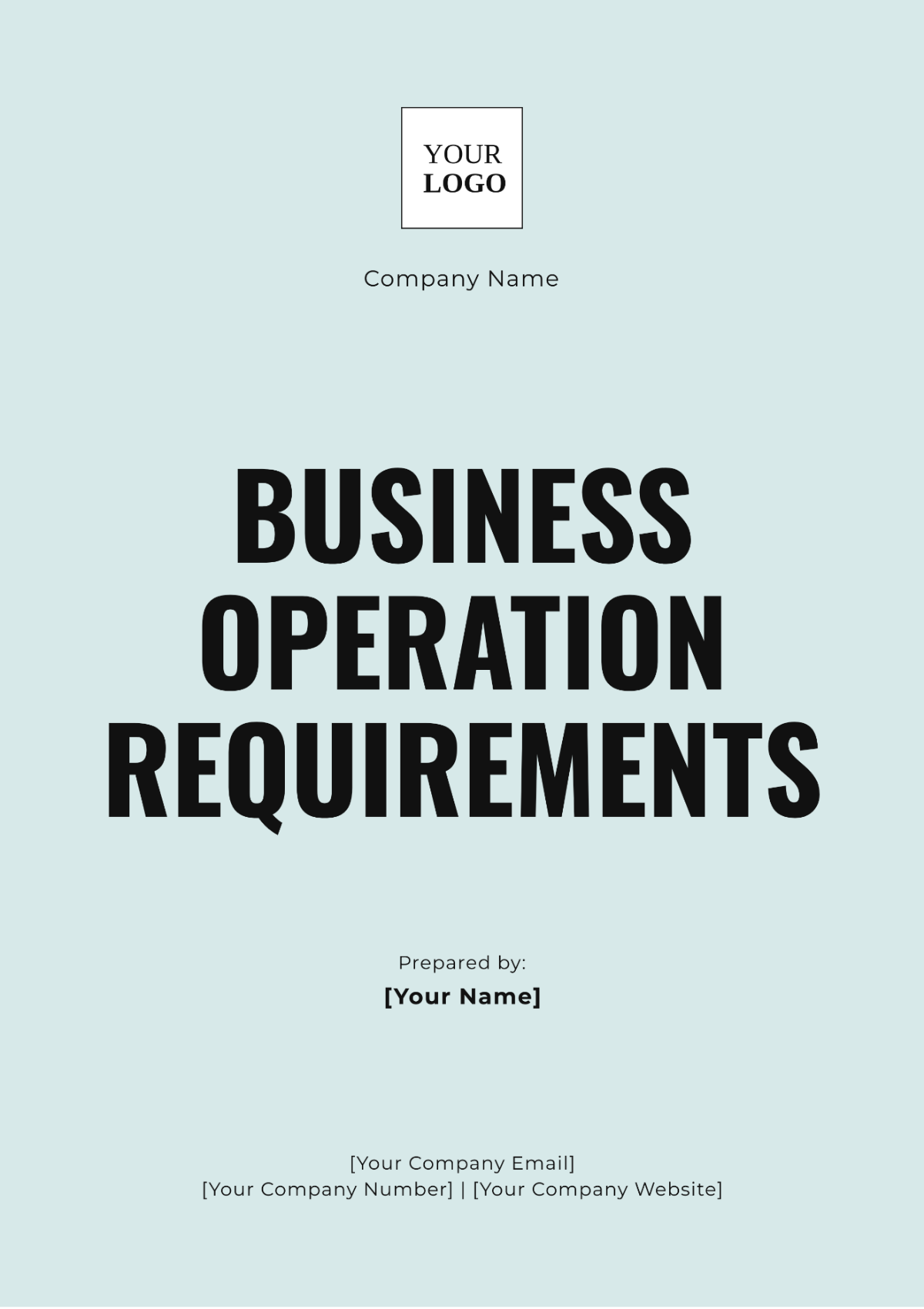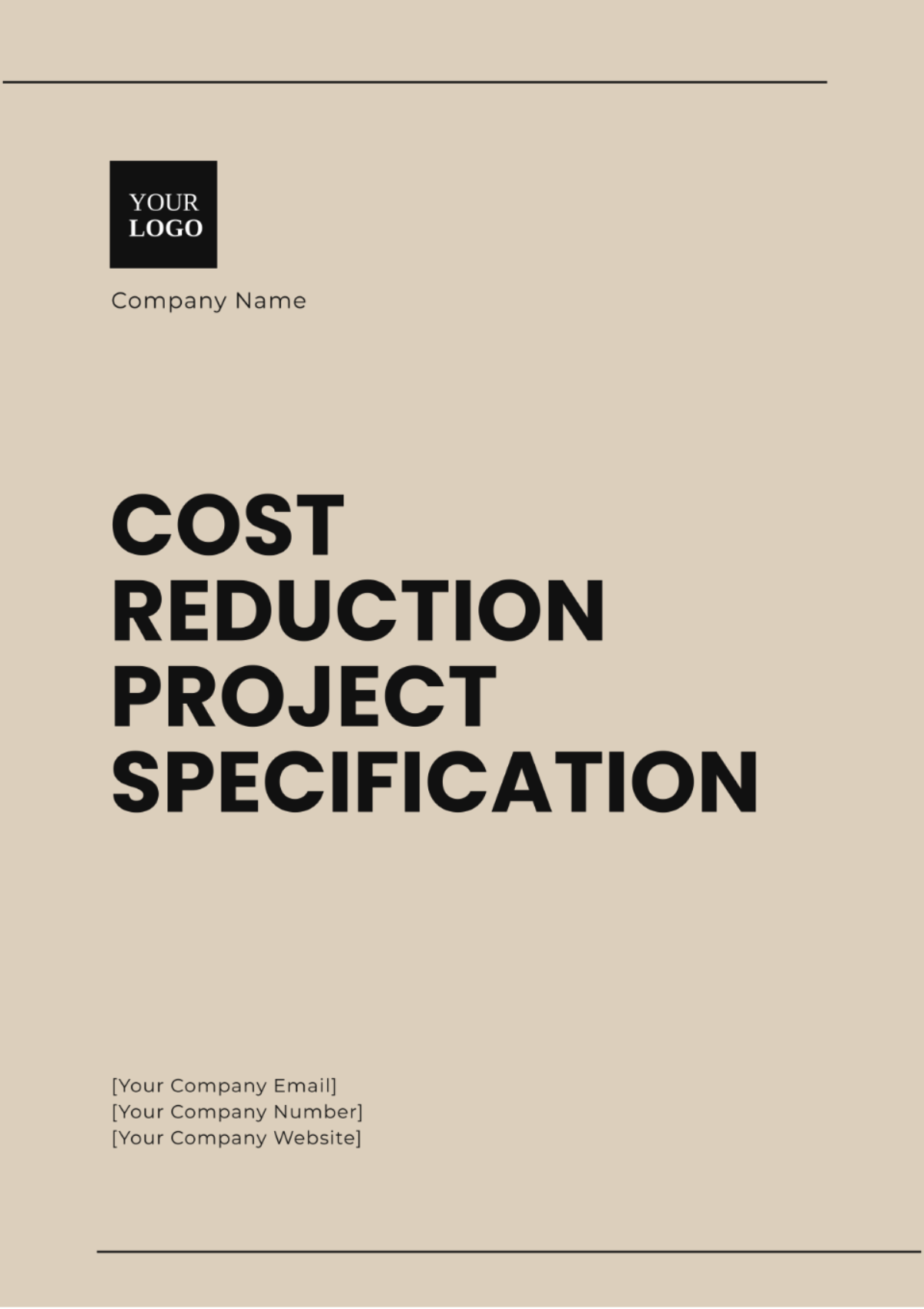Business Expansion Project Specification
Prepared By: [YOUR NAME]
Date: [DATE]
I. Executive Summary
This Business Expansion Project aims to strategically grow our company by entering new markets, launching innovative products and services, increasing production capacity, and scaling existing operations. Our objective is to achieve sustainable growth, enhance market presence, and increase profitability. The project is expected to culminate in increased market share, revenue growth, and a strong competitive position.
II. Project Objectives
Geographical Expansion: Enter three new markets within 24 months through targeted research, localized marketing, and distribution setup.
Product Launch: Introduce and integrate two new product lines next year, covering development, testing, and rollout.
Production Capacity: Boost production capacity by 50% in 18 months via facility expansion and technology upgrades.
Cost Reduction: Lower per-unit production costs by 20% within two years through process improvements and automation.
Revenue Growth: Achieve a 25% revenue increase in three years by expanding market reach, launching new products, and optimizing sales strategies.
III. Scope of Work
Market Research: Perform an in-depth analysis to pinpoint and assess new market opportunities, including competitor analysis, consumer behavior, and market trends.
Product Development: Innovate and fine-tune new products or services to meet market demands, ensuring alignment with customer needs and business objectives.
Production Scaling: Enhance production capabilities through facility upgrades and process optimization, aiming for greater efficiency and output capacity.
Marketing and Sales Strategy: Create and execute comprehensive strategies for market entry and growth, focusing on effective brand positioning, customer acquisition, and sales optimization.
Financial Planning: Acquire and manage necessary funding, and oversee financial resources to support the expansion, ensuring budget adherence and financial sustainability.
Limitations
The project will refrain from participating in any business activities that are not directly related to its core objectives and areas of focus.
The expansion efforts undertaken by the company will be restricted exclusively to those markets that have been thoroughly examined and validated through detailed and comprehensive market research studies.
IV. Market Analysis
A. Target Audience
Our expansion aims at mid-sized technology companies in North America and Europe, particularly IT departments and business units striving to improve operational efficiency with innovative tech solutions, typically earning $10 million to $500 million annually and having 50 to 500 employees. Additionally, we target small and medium-sized enterprises (SMEs) seeking affordable scaling options.
B. Competitors
Company A: A leading player in the North American market with a 25% market share. They are known for their extensive range of software solutions and exceptional customer service.
Company B: A significant competitor in Europe, holding a 20% market share. They specialize in innovative technology solutions and have a strong foothold in the small to medium-sized enterprise (SME) sector.
Company C: A major competitor with a 15% market share in both North American and European markets. They focus on high-end technology solutions for large enterprises and boast an extensive distribution network.
These established competitors provide a similar product range, benefit from strong brand recognition, and have extensive customer bases, making market entry significantly challenging.
C. Potential Challenges
Market Entry Barriers: Regulatory requirements and differing standards in new geographic regions could delay market entry. Additionally, establishing local partnerships and distribution networks may require significant time and resources.
Competitive Pressures: Existing competitors have entrenched customer bases and strong brand loyalty. Gaining market share will require differentiating our products and offering superior value propositions.
Operational Issues: Scaling production and adjusting to local market demands may present logistical challenges. There could also be potential delays in securing and setting up new facilities, impacting the overall timeline.
V. Business Case
Market Potential: Target markets are projected to grow at 12% annually over the next five years due to rising demand for innovative technology and digital transformation.
Cost Efficiency: Increasing production capacity by 50% is expected to reduce per-unit costs by 15% through economies of scale and automation.
Revenue Growth: New product lines are anticipated to generate an additional $10 million in annual revenue, capturing 5% of the target market within the first year.
Return on Investment: The projected ROI is 30% over three years, based on the $5 million investment and anticipated revenue and cost savings.
VI. Project Plan
Phase | Milestones | Timeline |
|---|---|---|
Market Research | Complete market analysis | January 2050 - June 2050 |
Product Development | Launch new products | July 2050 - December 2050 |
Production Scaling | Expand facilities | January 2051 - September 2051 |
Market Entry | Establish market presence | October 2051 - March 2052 |
VII. Resource Requirements
A. Personnel
Market Researchers: To conduct comprehensive market analysis and identify growth opportunities.
Product Developers: To design, develop, and refine new products, ensuring they meet market demands and align with business goals.
Sales Professionals: To drive market penetration, build relationships with potential clients, and enhance sales strategies.
B. Equipment
Manufacturing Machinery: Acquisition of state-of-the-art machinery to increase production capacity and improve efficiency.
Technological Tools: Investment in advanced software and hardware tools to support product development, production automation, and data analysis.
C. Budget
Initial Allocation: $5 million was allocated for the first phase, covering personnel, equipment, and operational expenses. This budget supports market research, product development, facility expansion, and initial marketing efforts, ensuring a strong foundation for the project’s success.
VIII. Risk Management
Market Entry Barriers: Conduct market research on regulations and local conditions. Form strategic partnerships to ease entry and leverage local knowledge.
Product Acceptance: Use pre-launch surveys and beta testing to ensure market fit. Refine products based on feedback and engage early adopters.
Funding Shortfall: Seek diverse funding sources and have a contingency plan. Regularly review financial intends to stay on budget.
Operational Challenges: Employ robust project management with regular reviews. Foster adaptability and continuous improvement.
IX. Stakeholder and Communication Plan
A. Key Stakeholders
Investors: The main investors, focused on the project's ROI and progress, are keen to know how their money is being used and its effect on the project's development, while keeping an eye on achieving the desired goals.
Strategic Partners: Business partners who are responsible for supplying vital resources, offering specialized expertise, or granting access to key markets.
Project Team Members: Internal staff including market researchers, product developers, and sales professionals actively working on the project.
Customers: Early adopters, including both individuals and organizations, along with key clients who are pivotal in the market, will use these new products and offer important feedback from their experiences.
B. Communication Strategy
Regular Updates: Provide bi-weekly progress reports to stakeholders through email updates and detailed project newsletters.
Progress Reports: Use quarterly review meetings and reports to present comprehensive updates on milestones, financials, and any changes in the project scope.
Channels: Utilize project management software for real-time updates and document sharing. Host video conferences and webinars for in-depth discussions and feedback sessions.
X. Implementation and Monitoring Plan
Phase | Activities | Timeline |
|---|---|---|
Phase 1 | Initiate market research and feasibility studies | January 2050 - June 2050 |
Phase 2 | Commence product development | July 2050 - December 2050 |
Phase 3 | Scale production capabilities and train new personnel | January 2051 - September 2051 |
Phase 4 | Launch marketing campaigns and enter new markets | October 2051 - March 2052 |
Metrics for Success
Revenue Targets: Achieve an additional $10 million in annual revenue from new product lines within the first year of launch.
Market Share Growth: Capture 5% of the target market share in new regions by the end of the second year.
Production Efficiency Improvements: Increase production efficiency by 20% through enhanced automation and process optimization.
Customer Acquisition: Acquire 1,000 new customers in each new market within the first six months of market entry.
Cost Reduction: Reduce per-unit production costs by 15% through economies of scale and technology upgrades within 18 months.
Return on Investment (ROI): Achieve a 30% ROI on the $5 million investment within three years.

